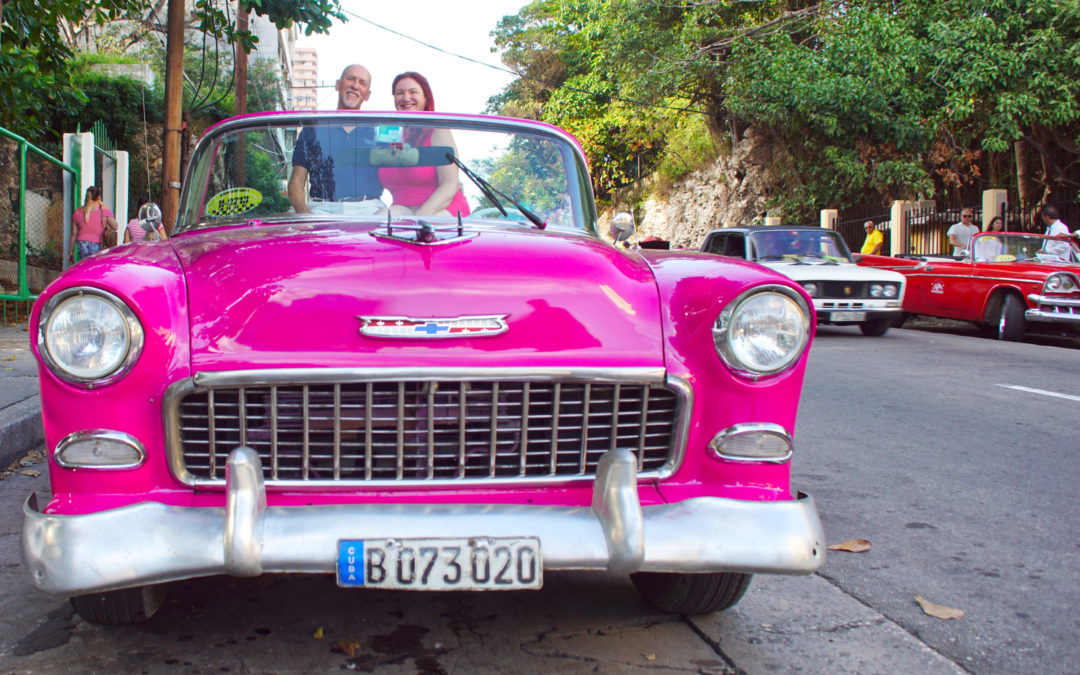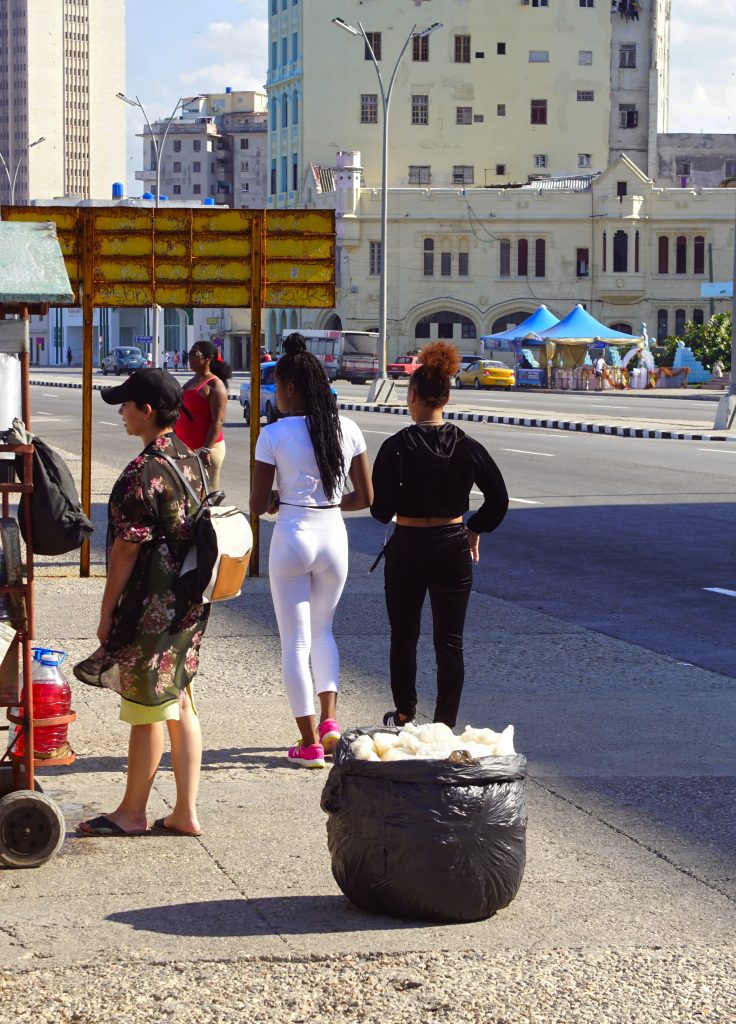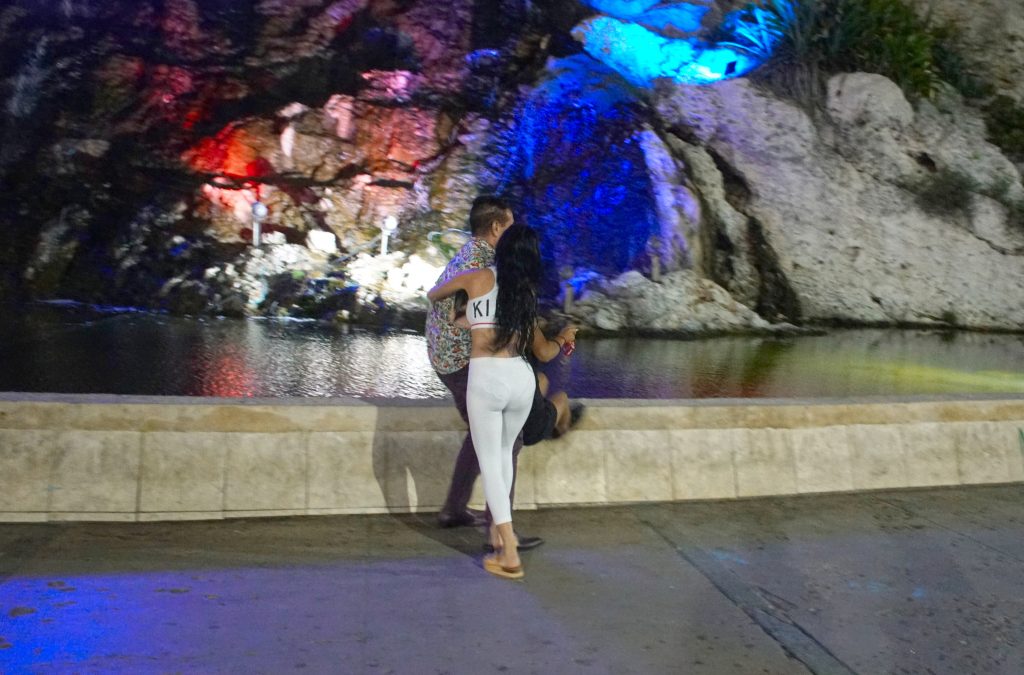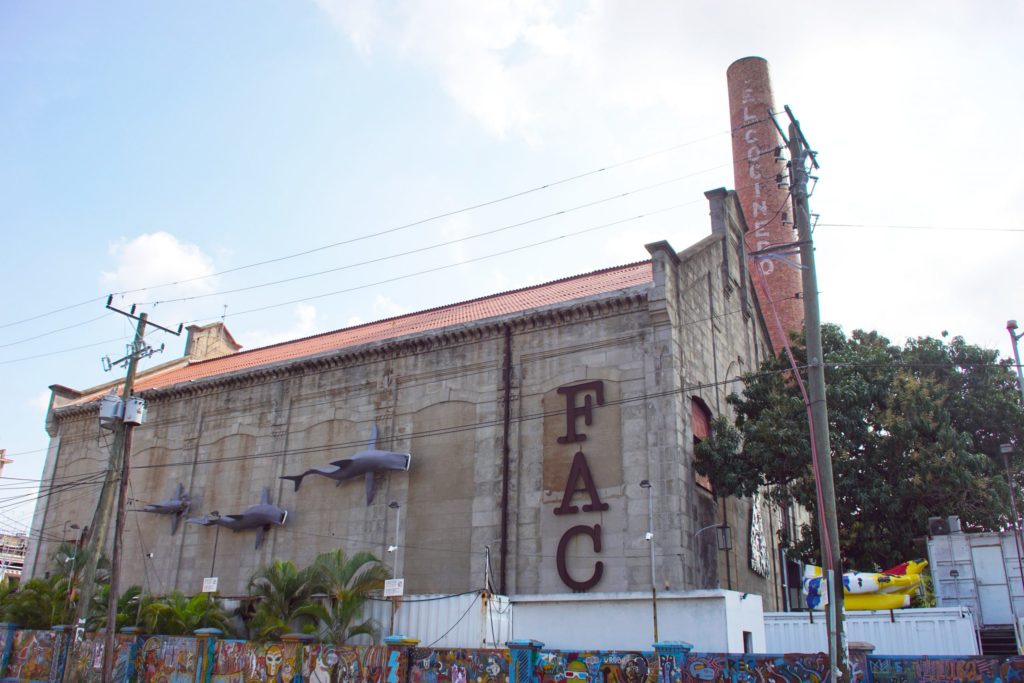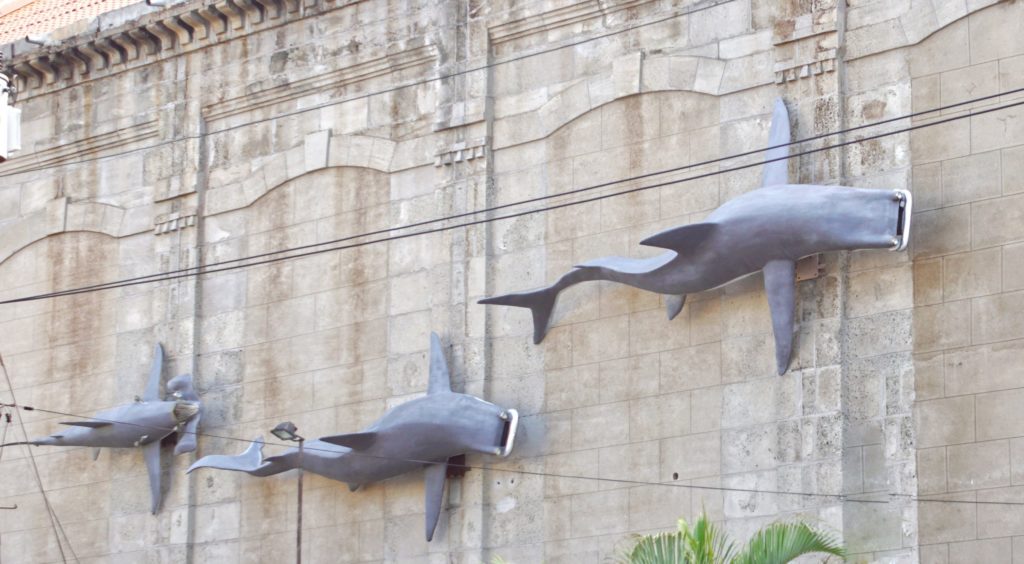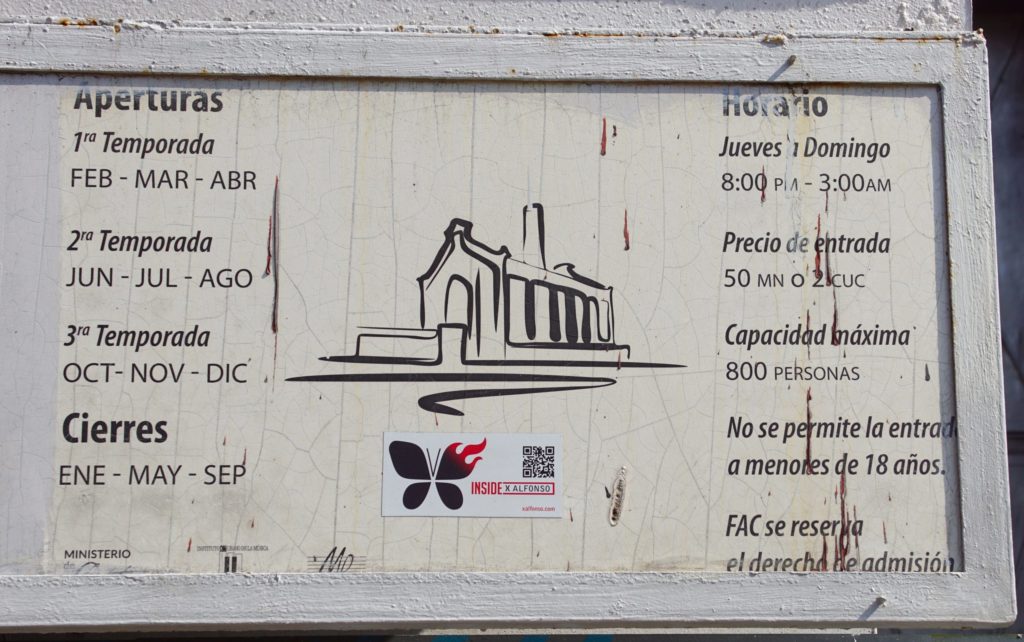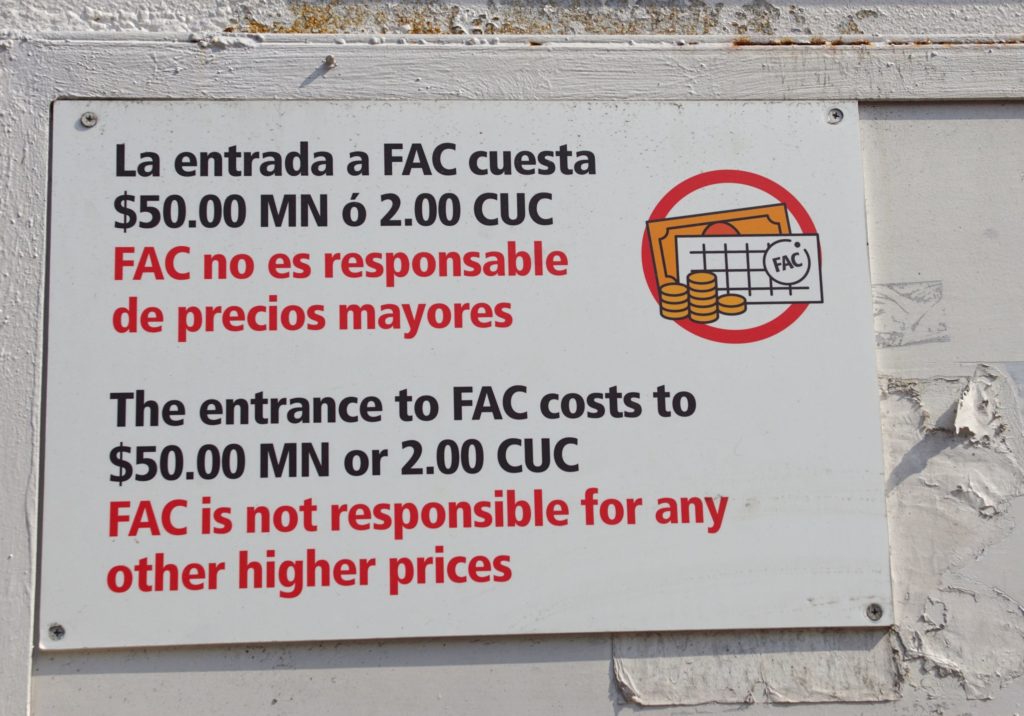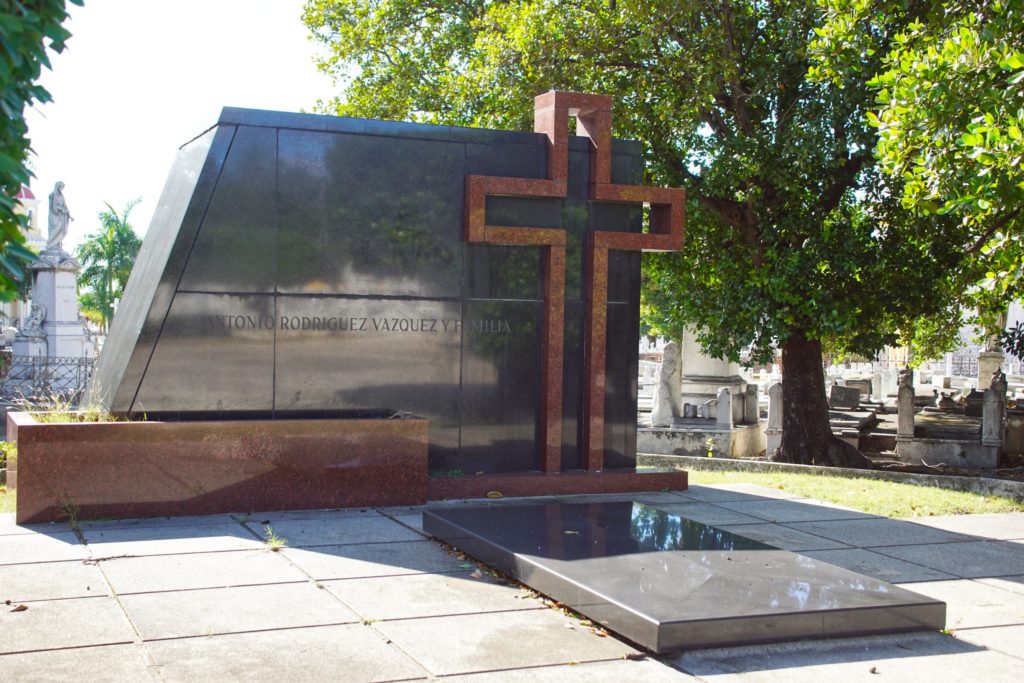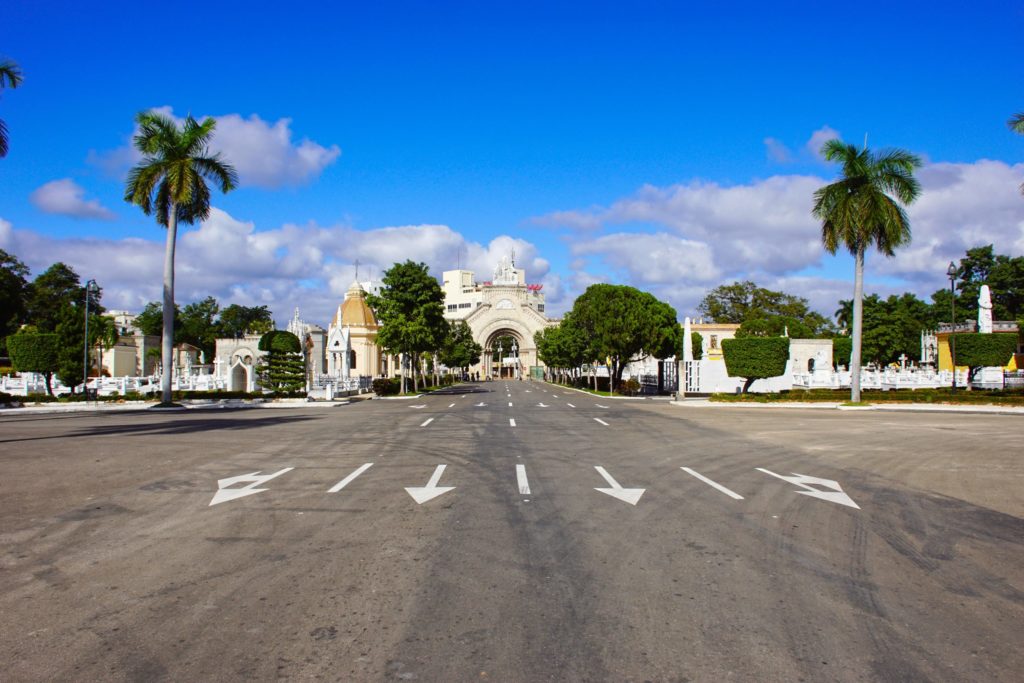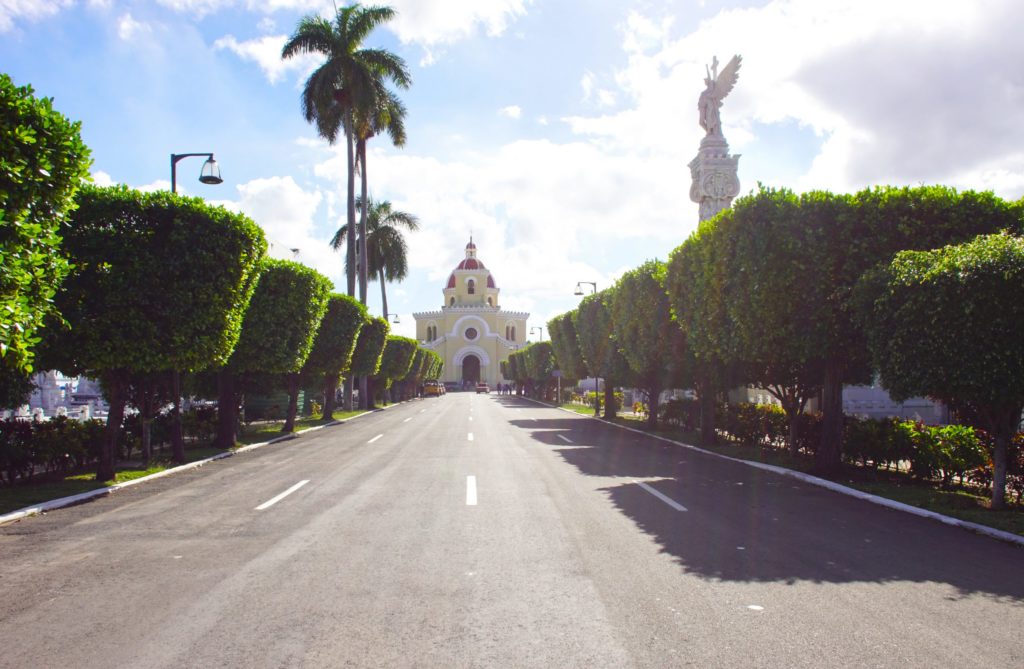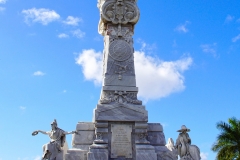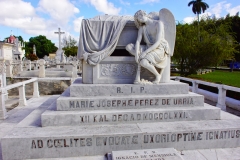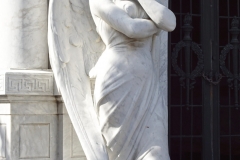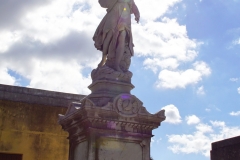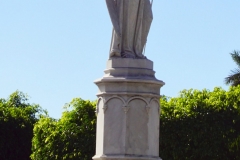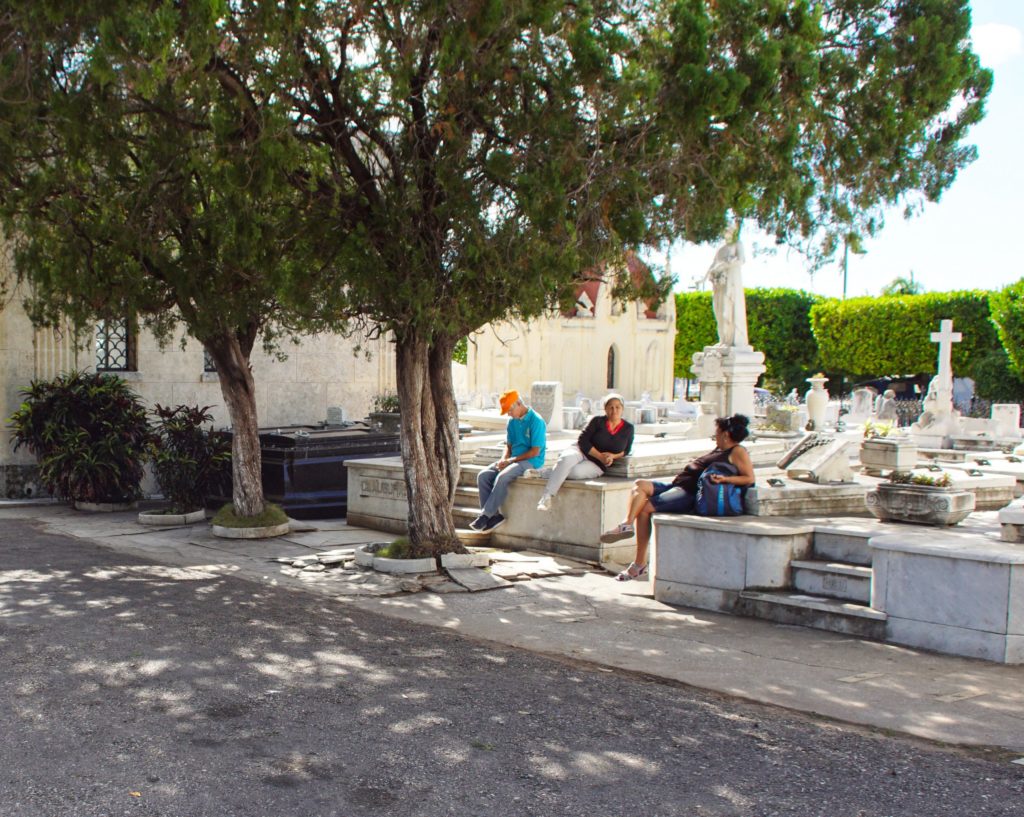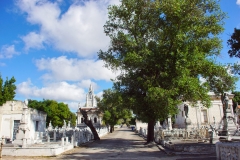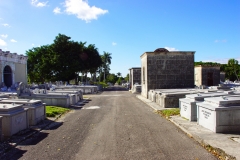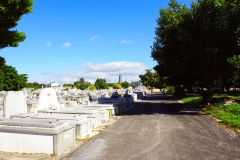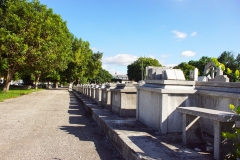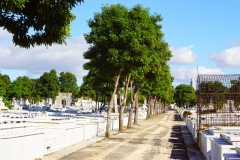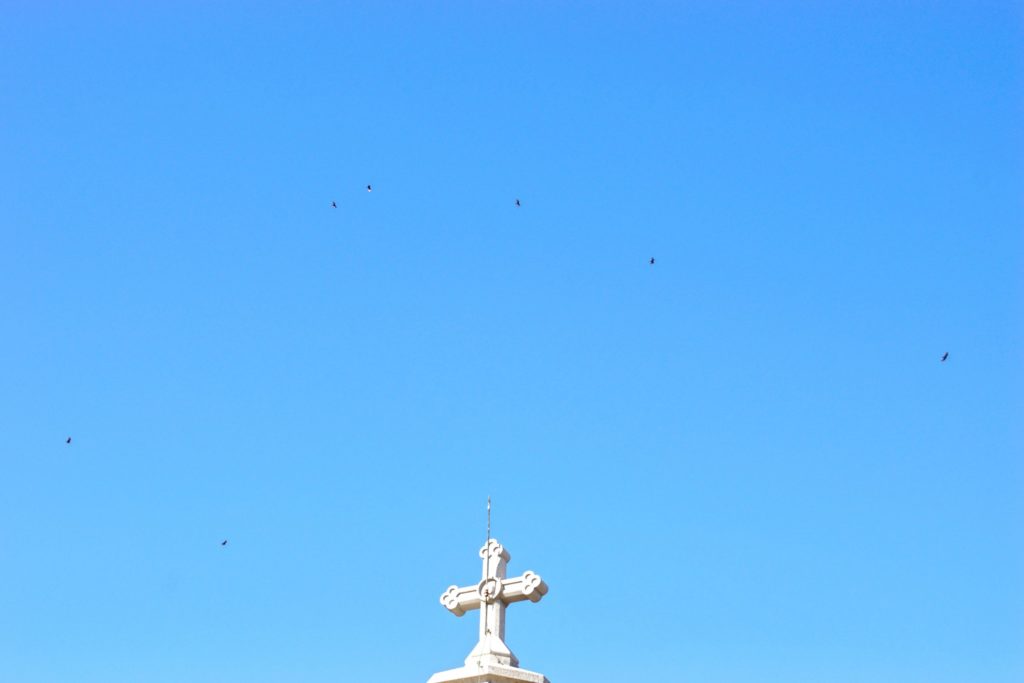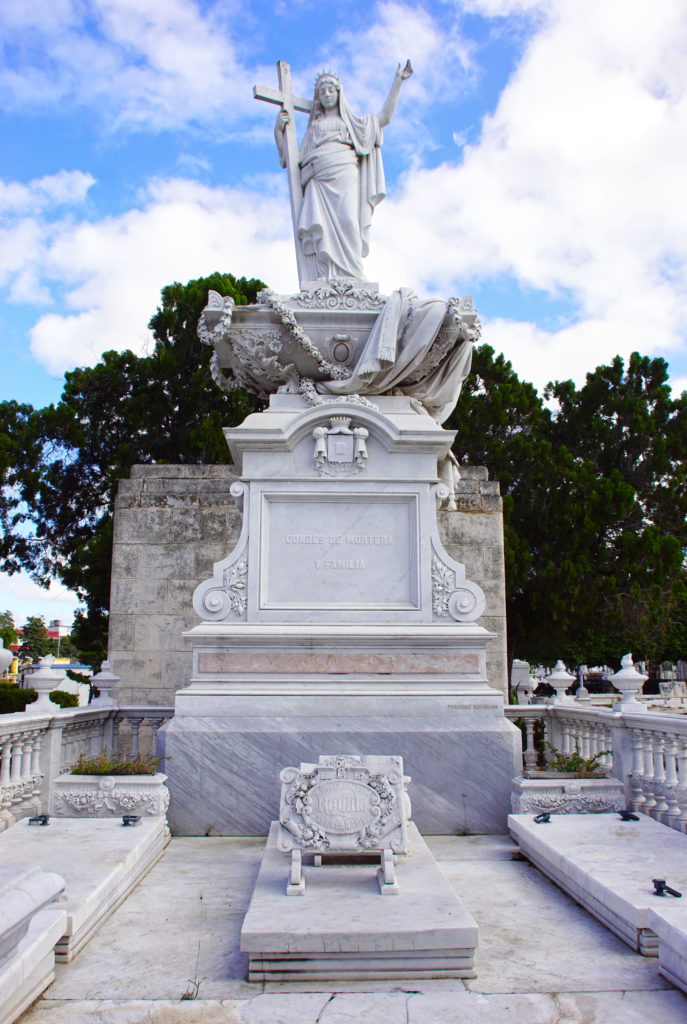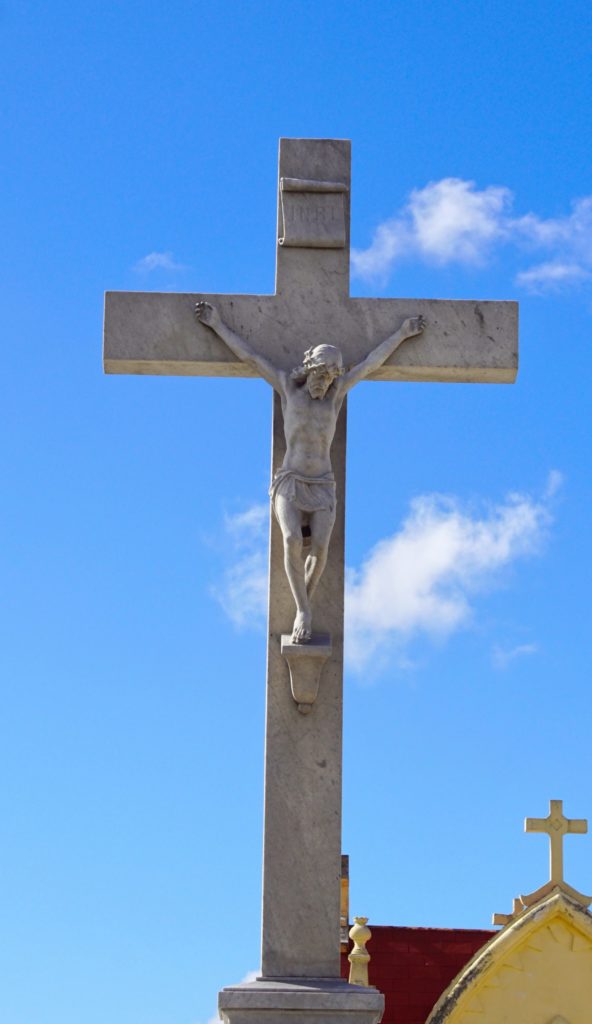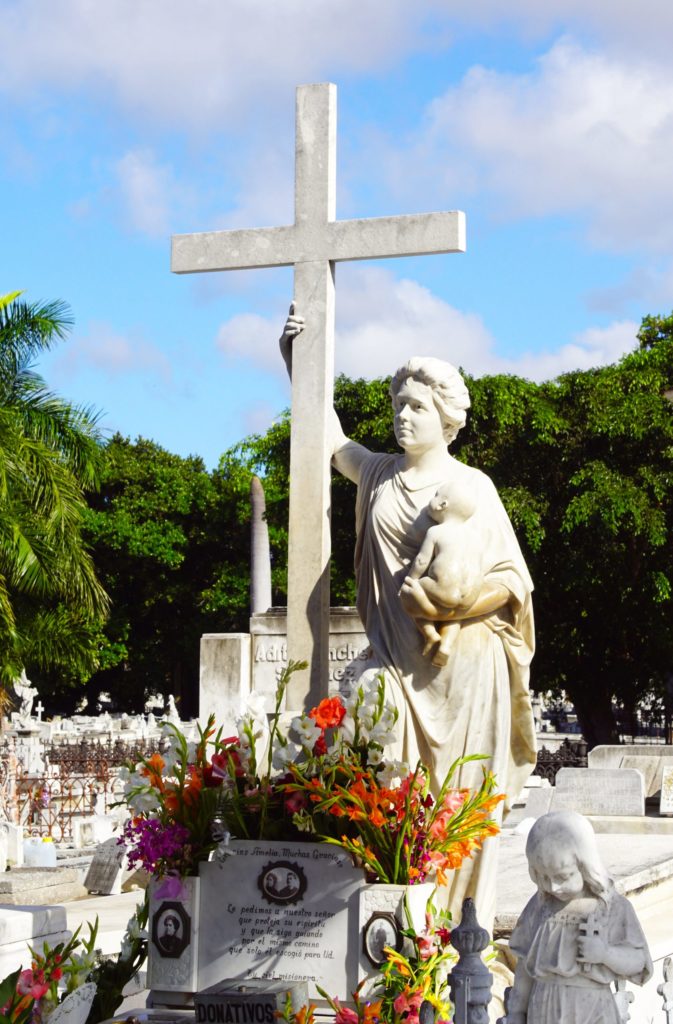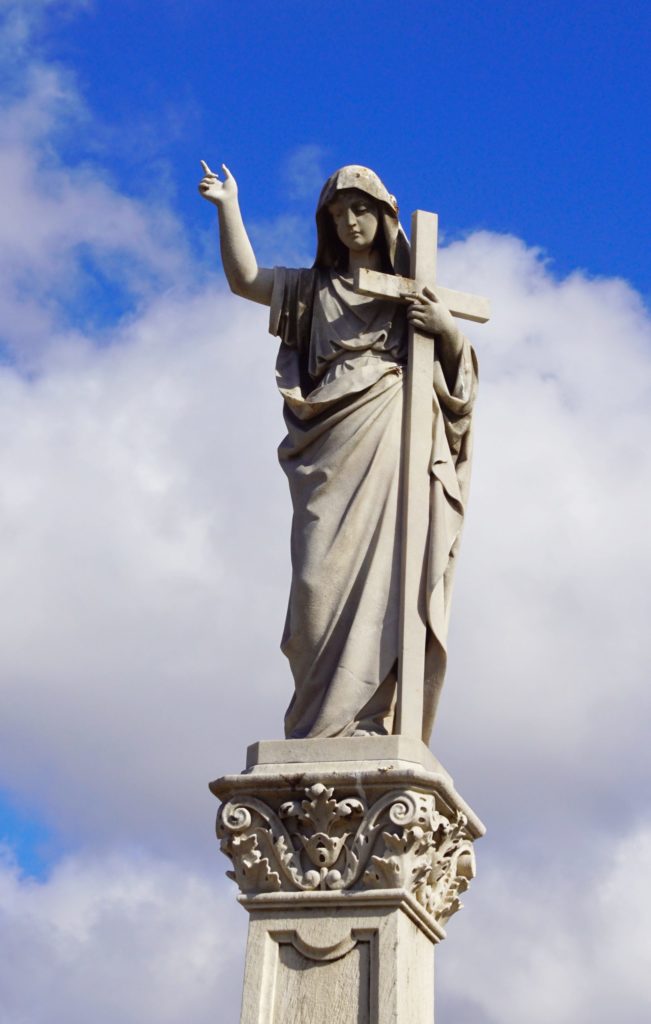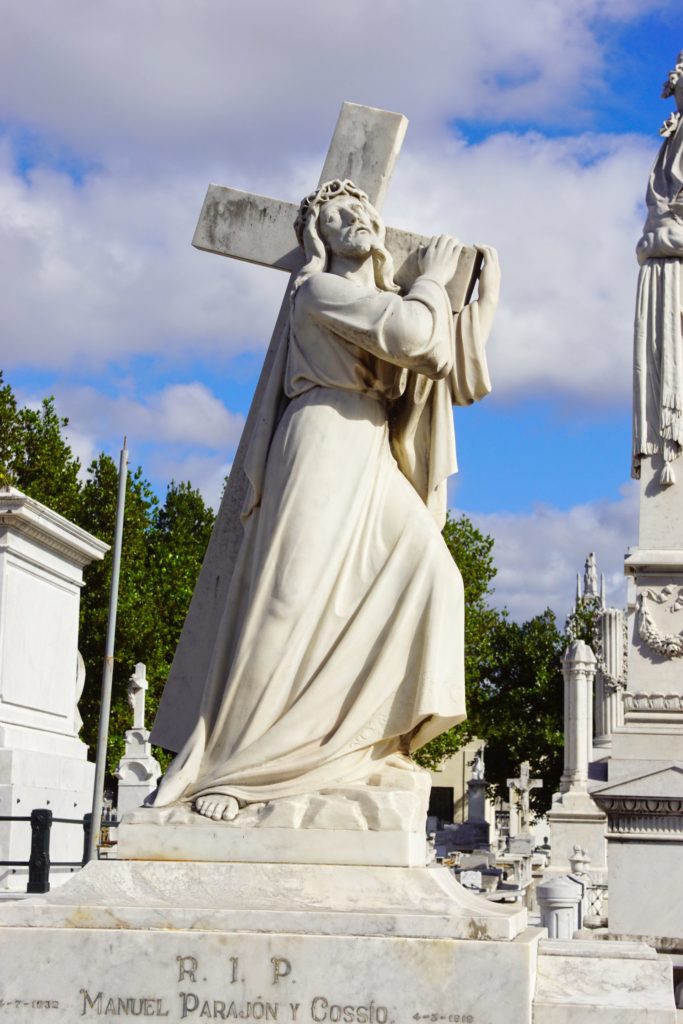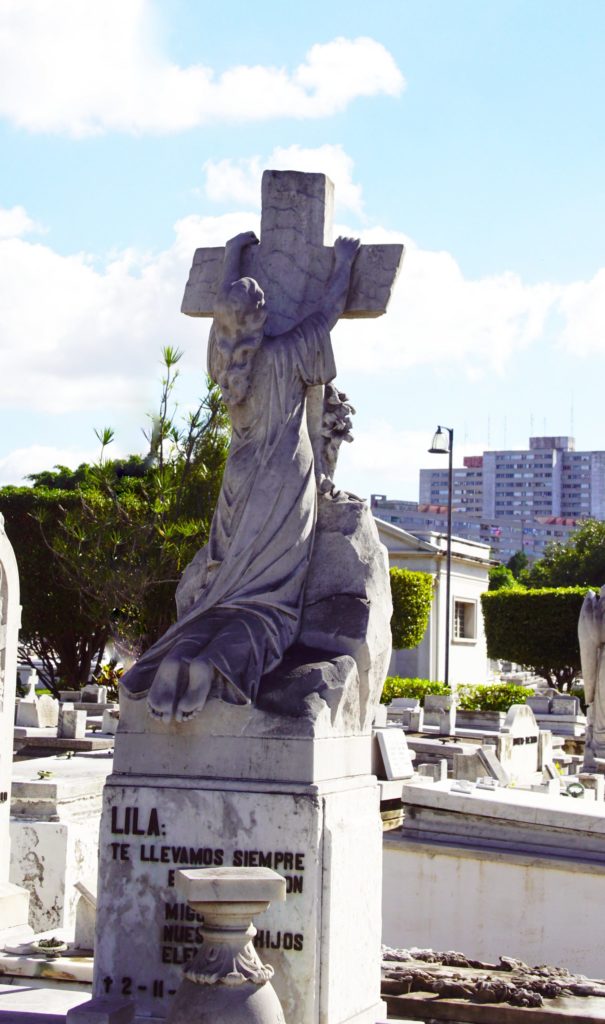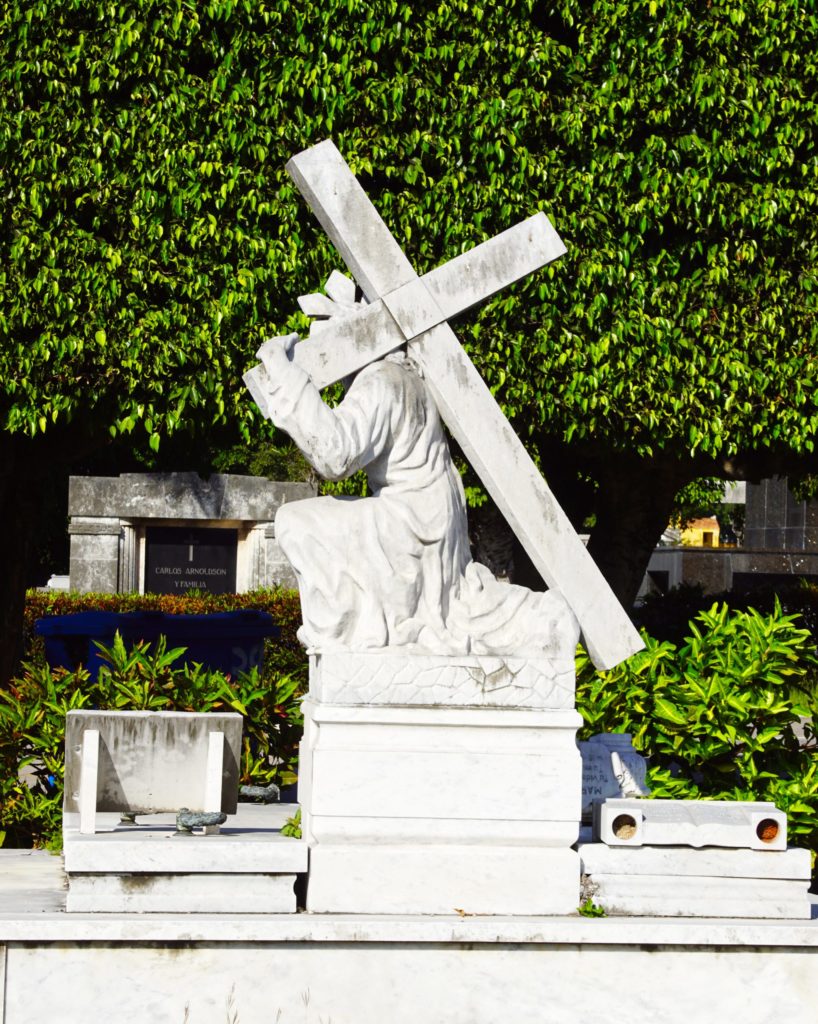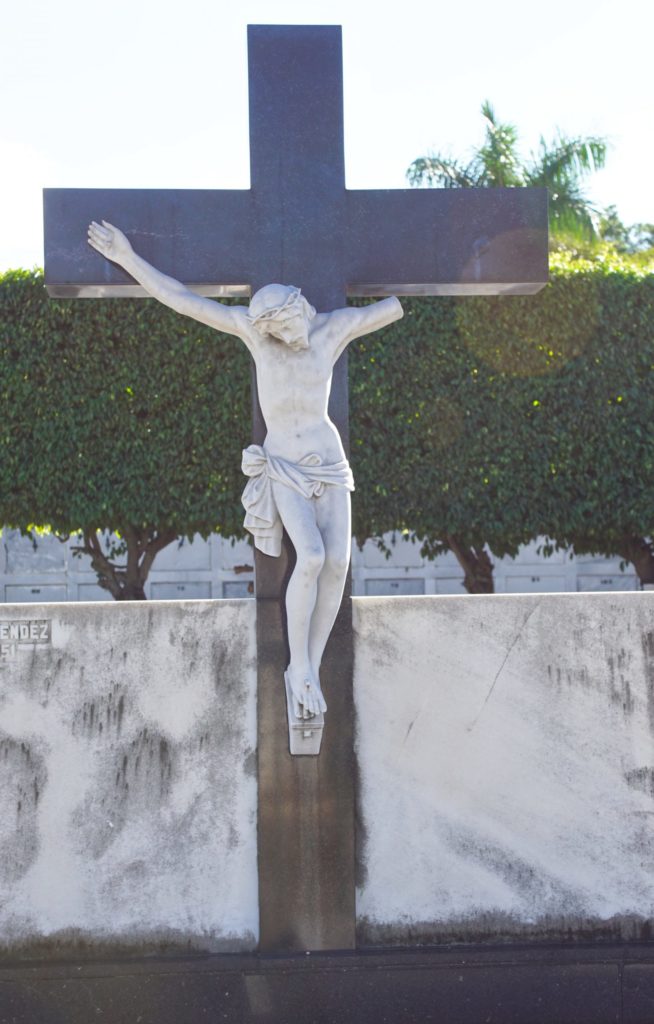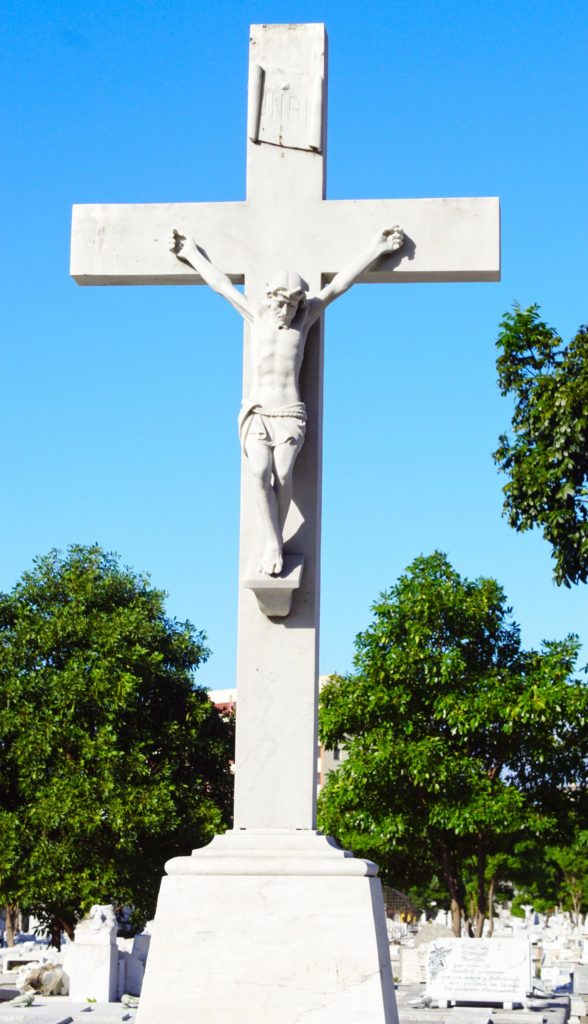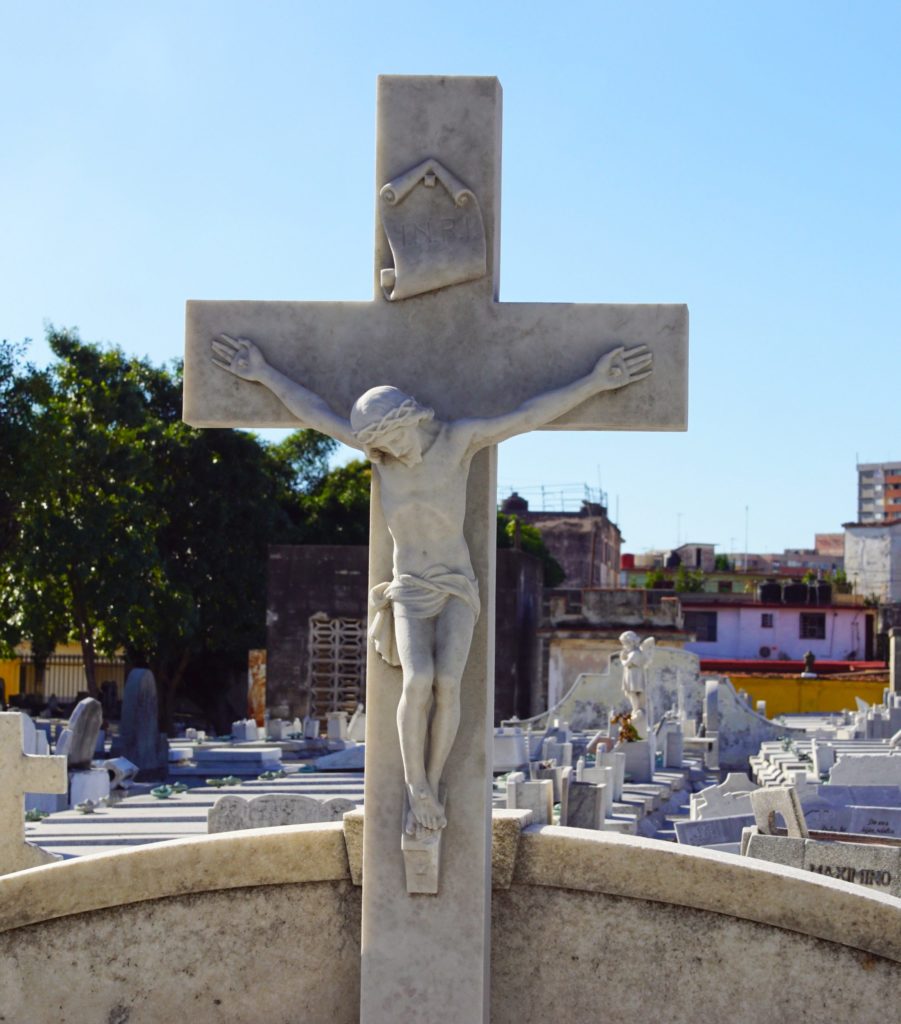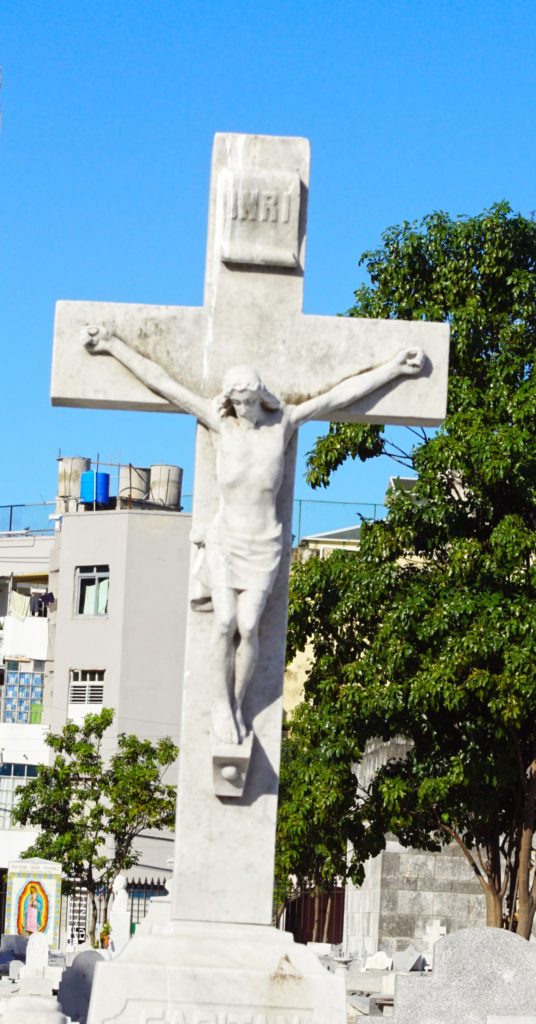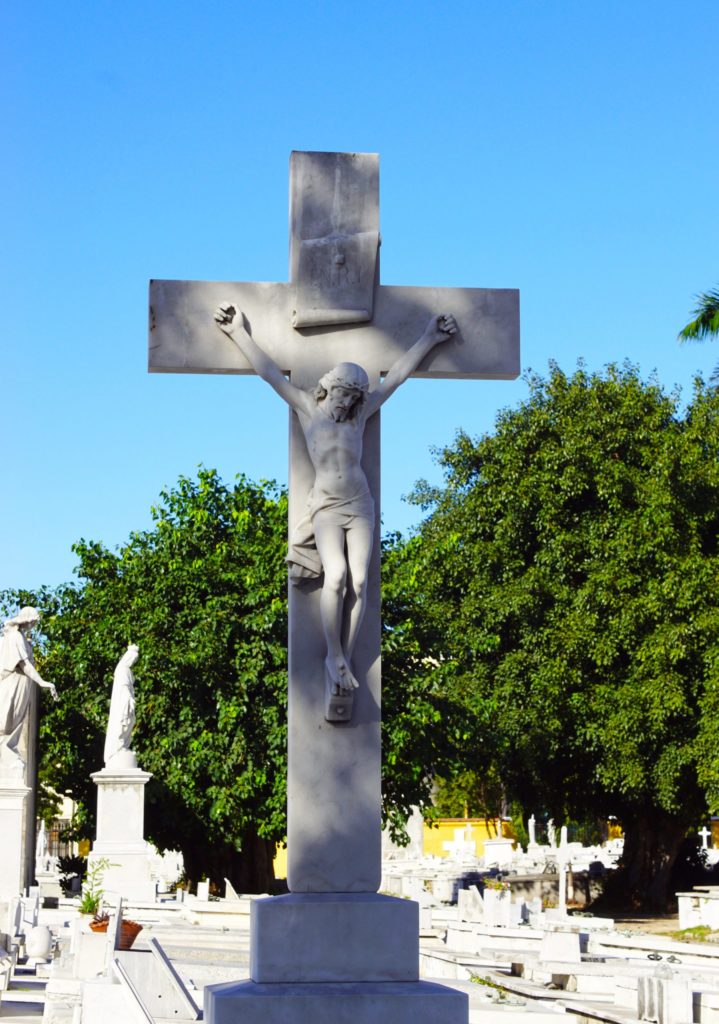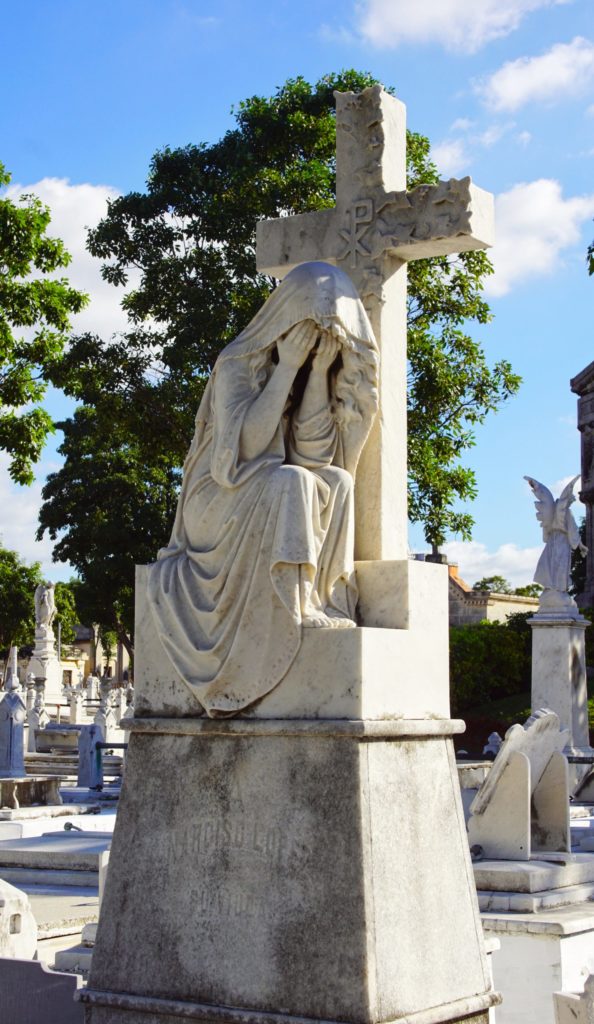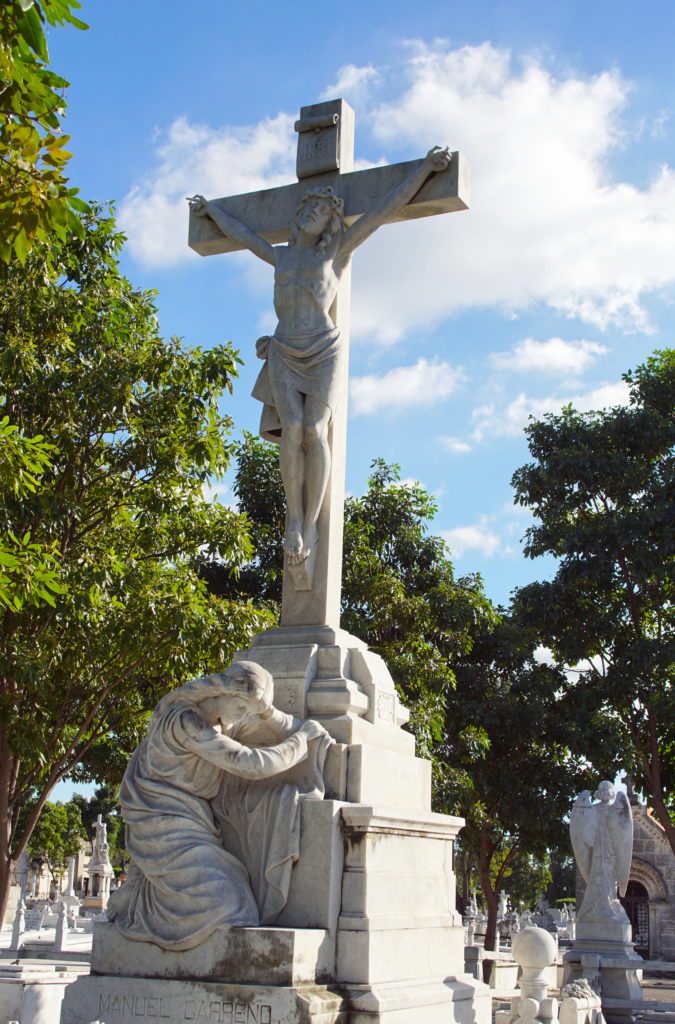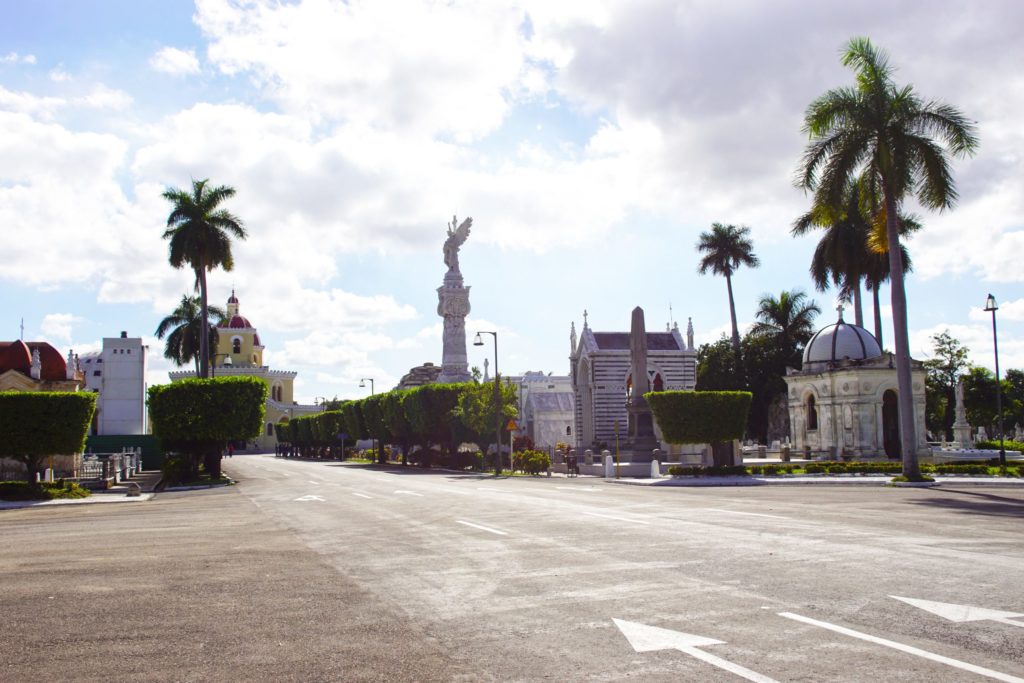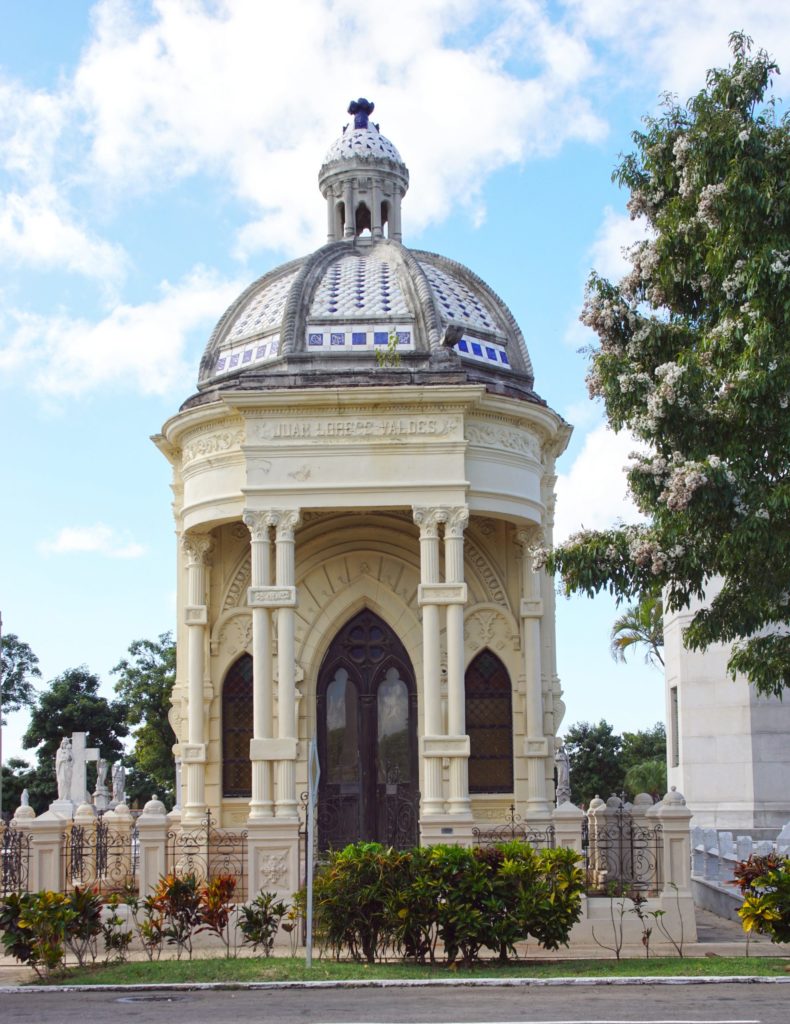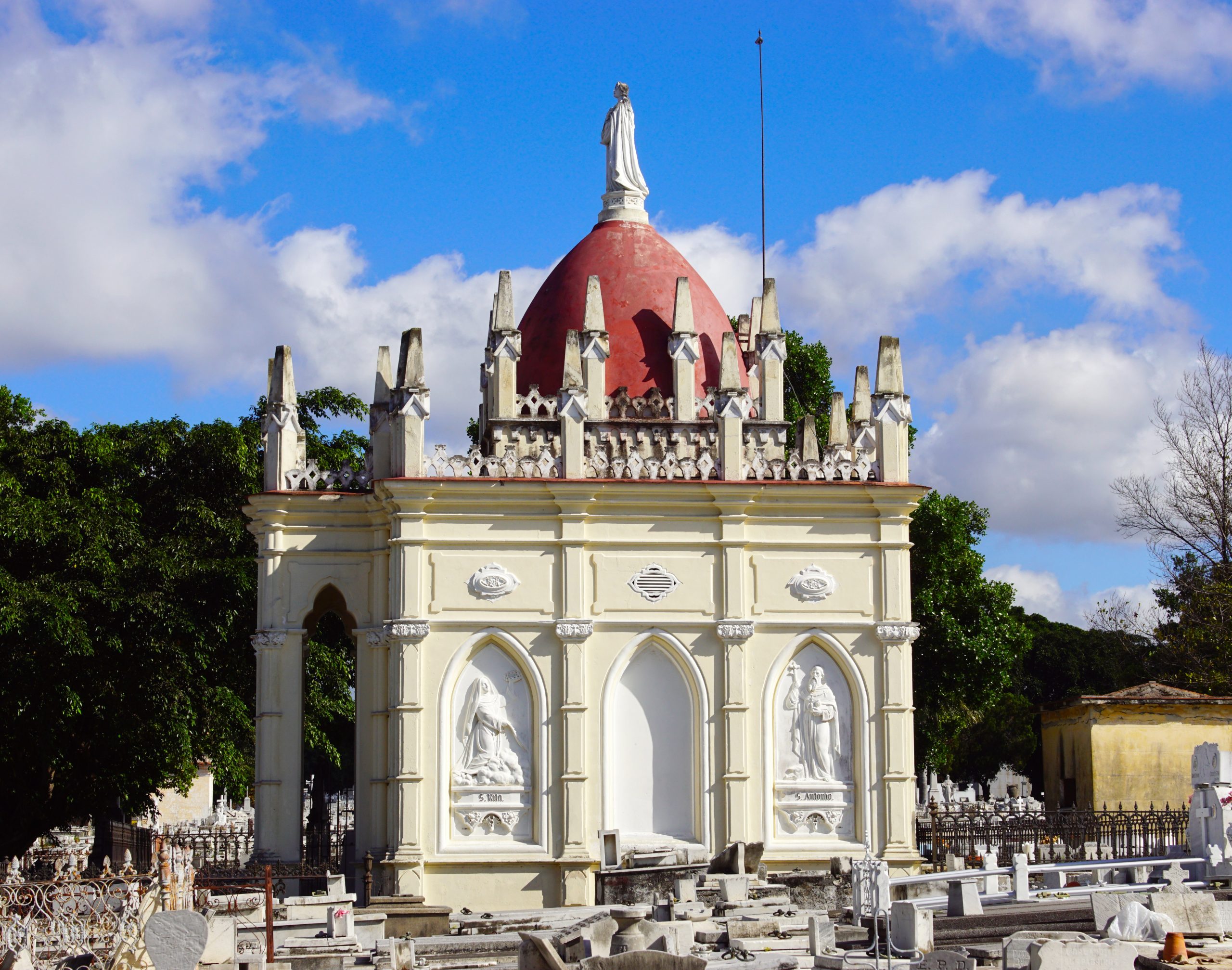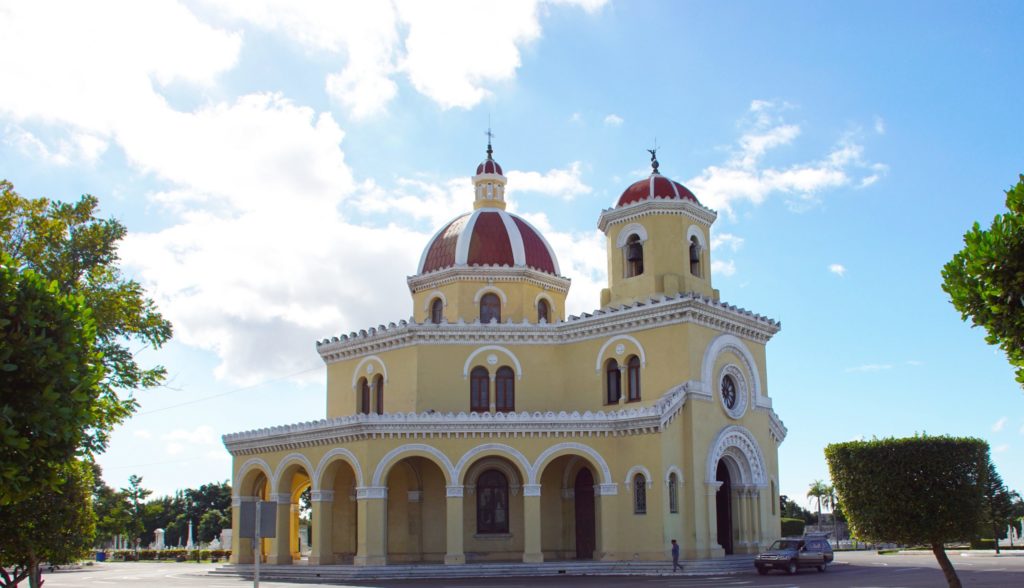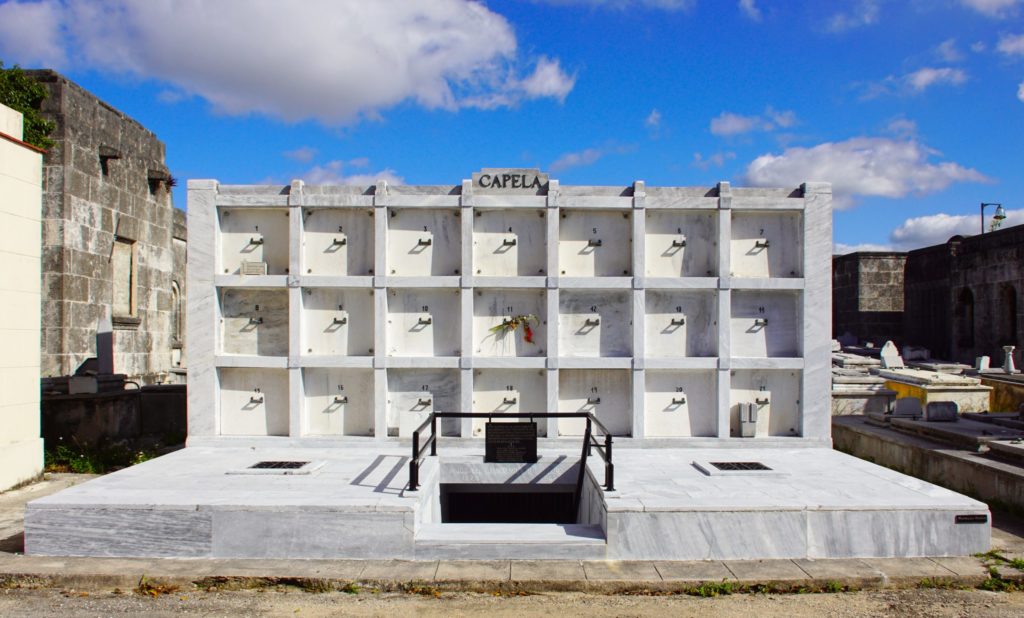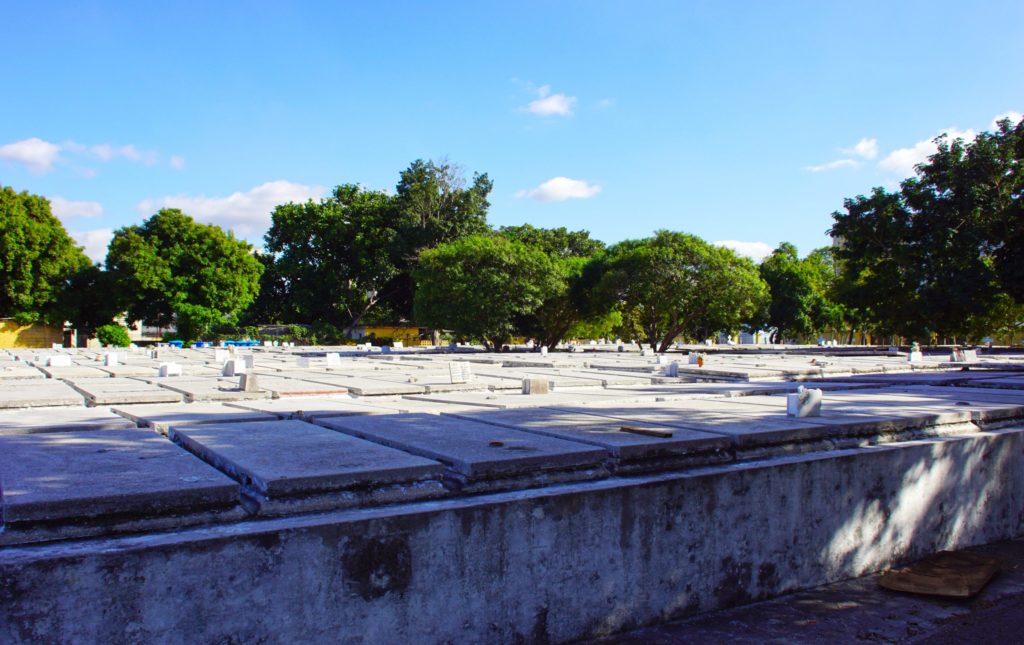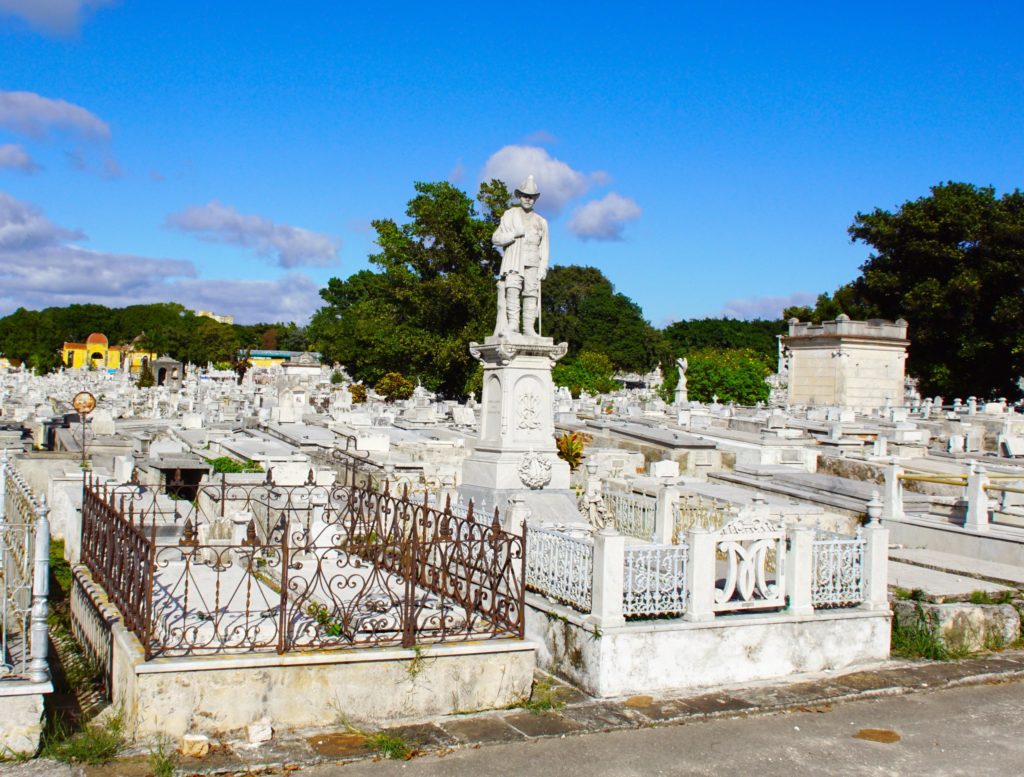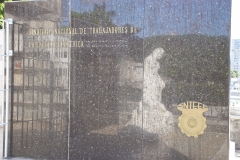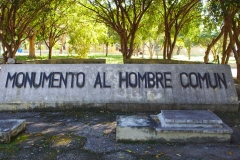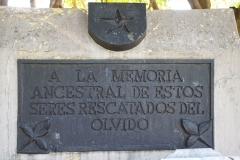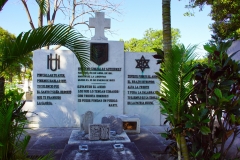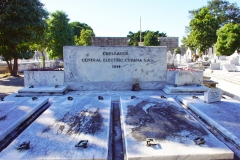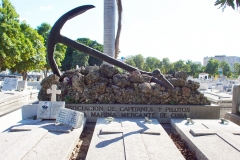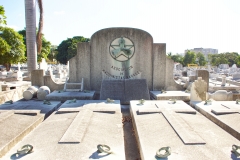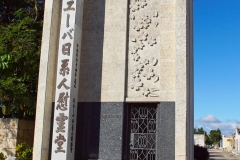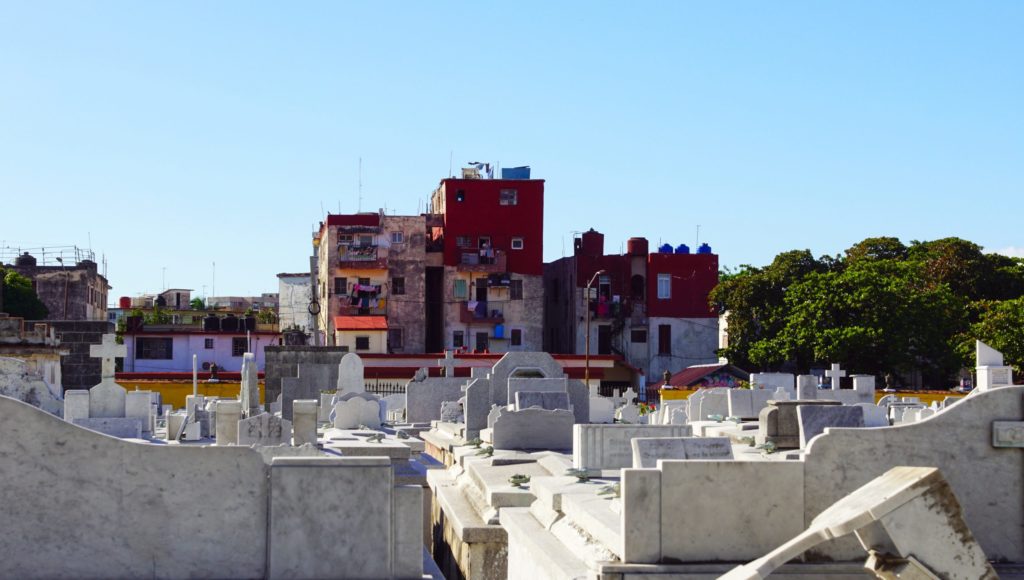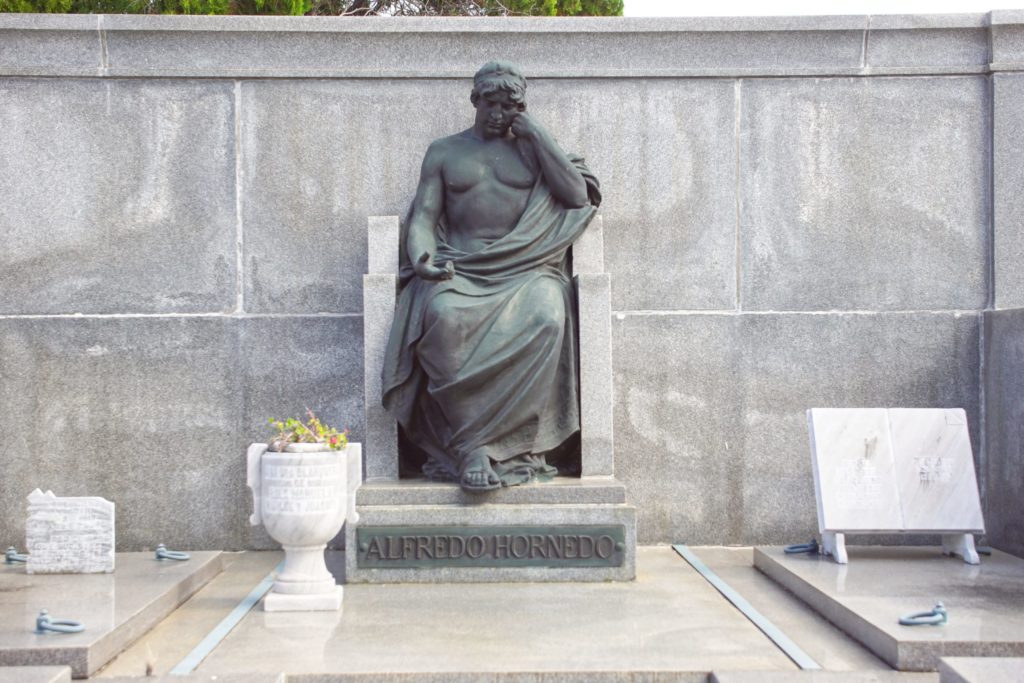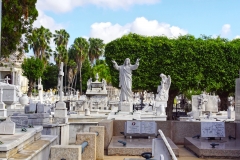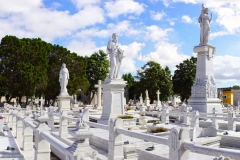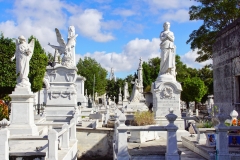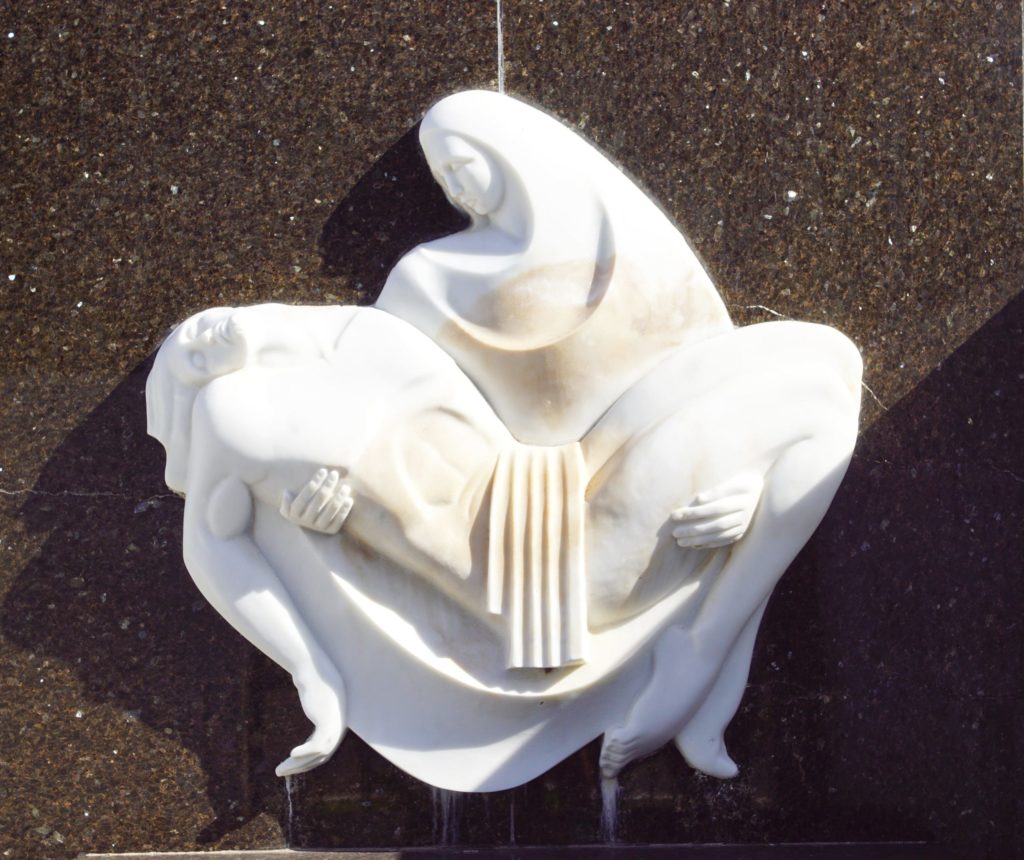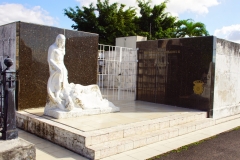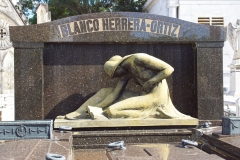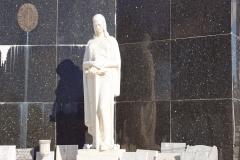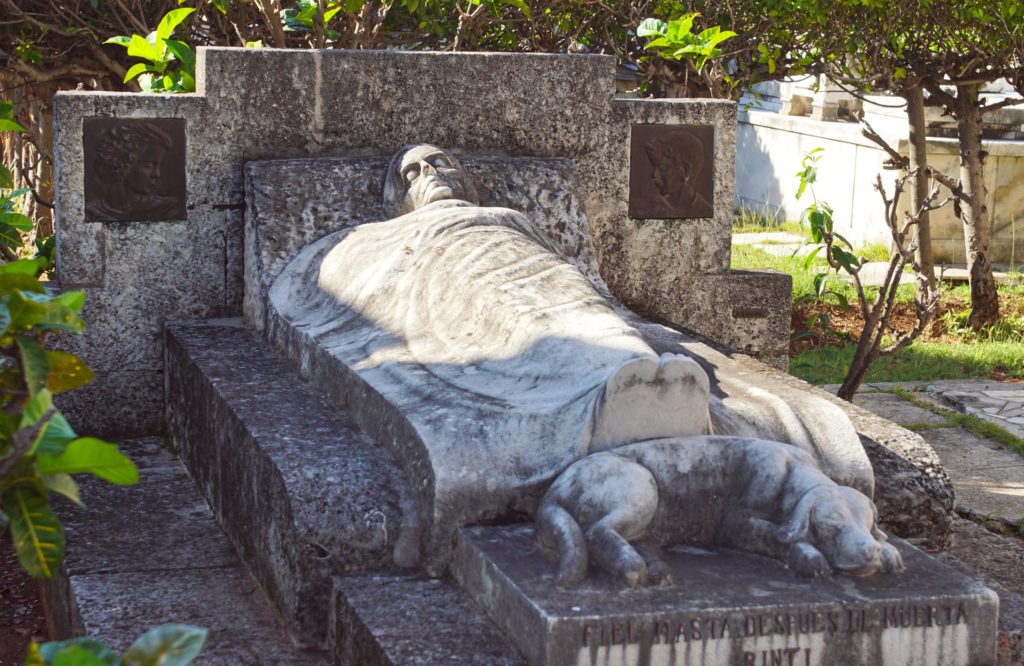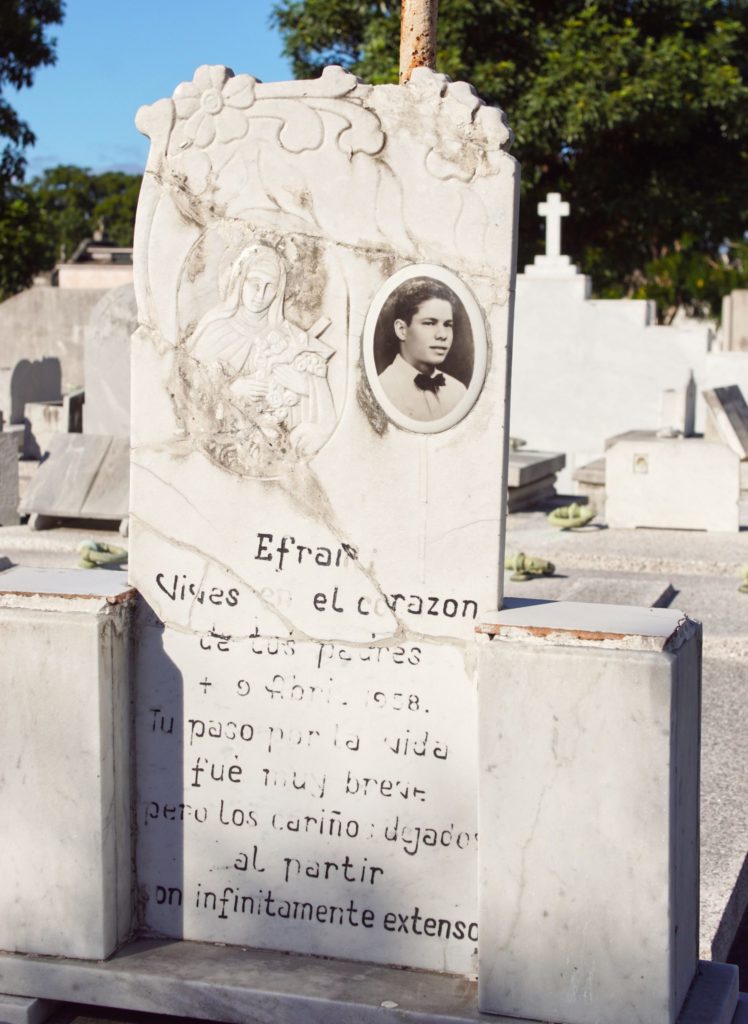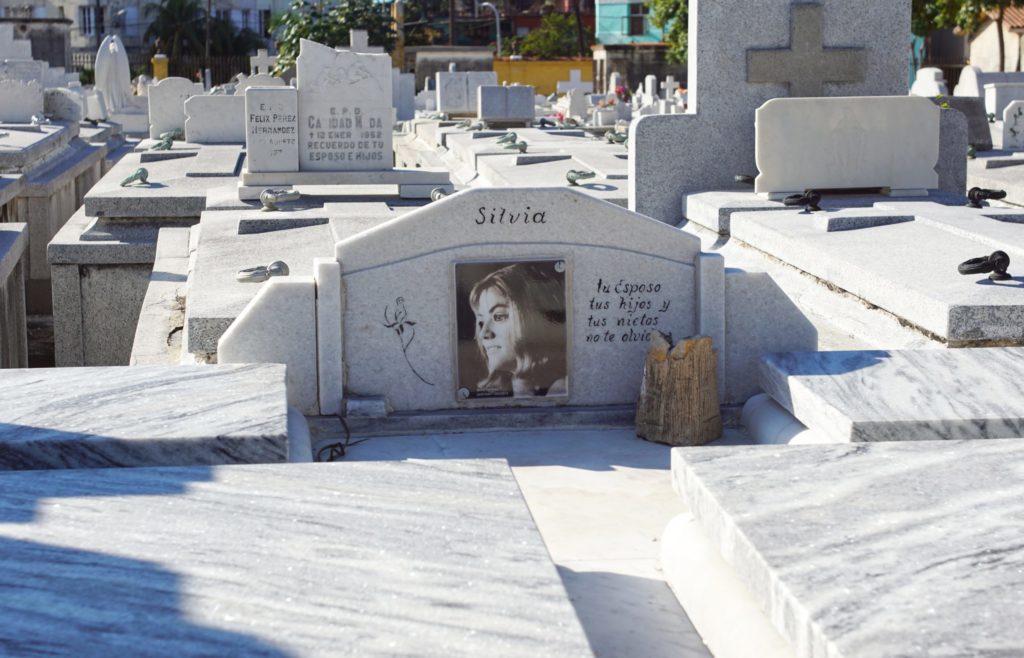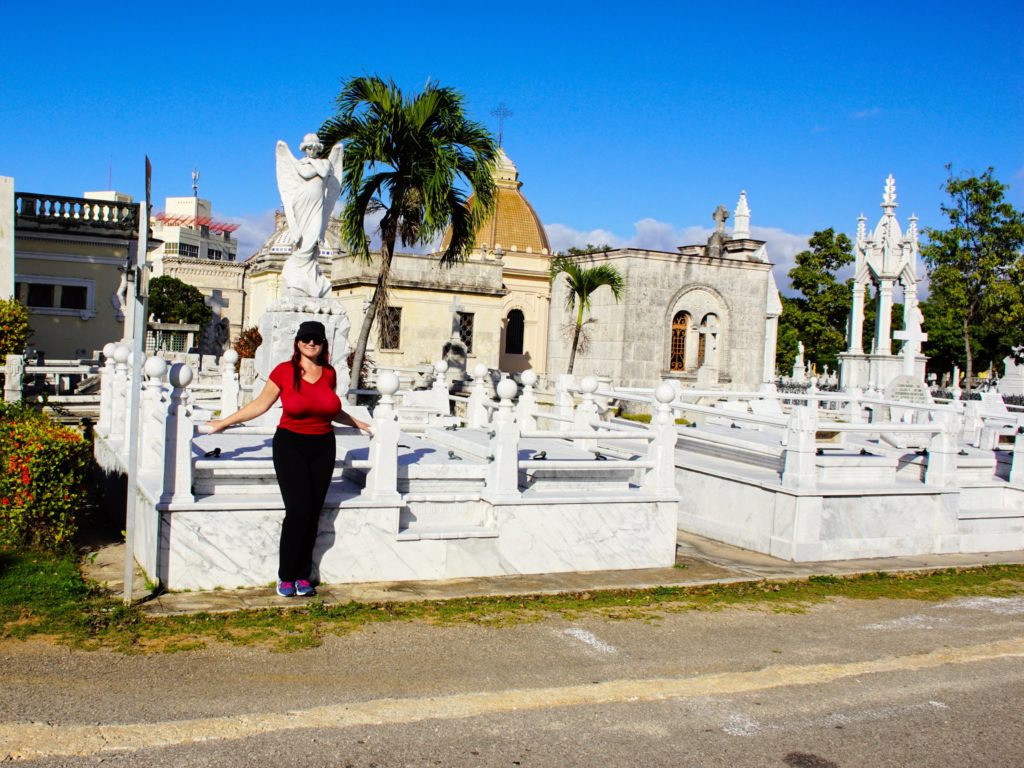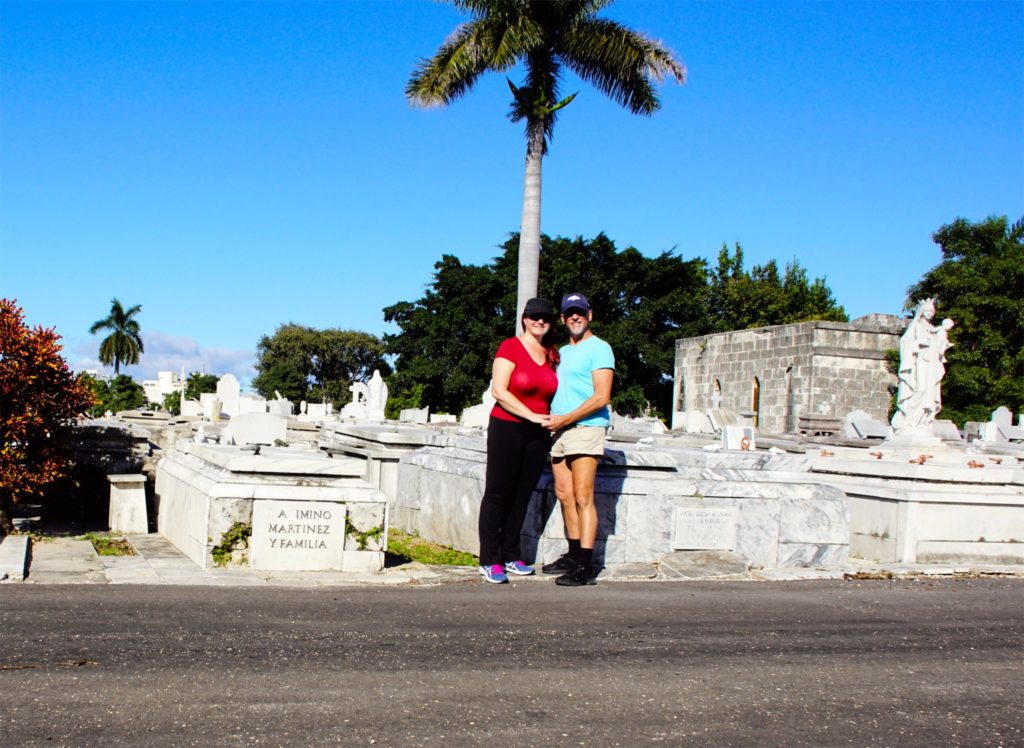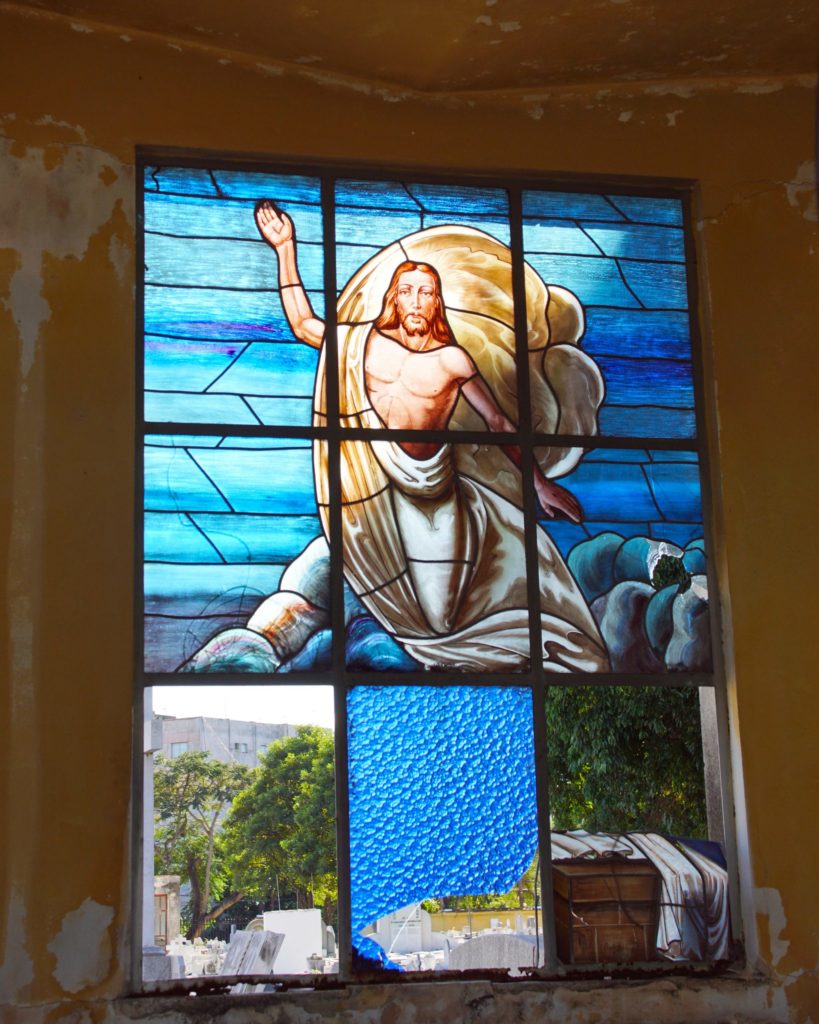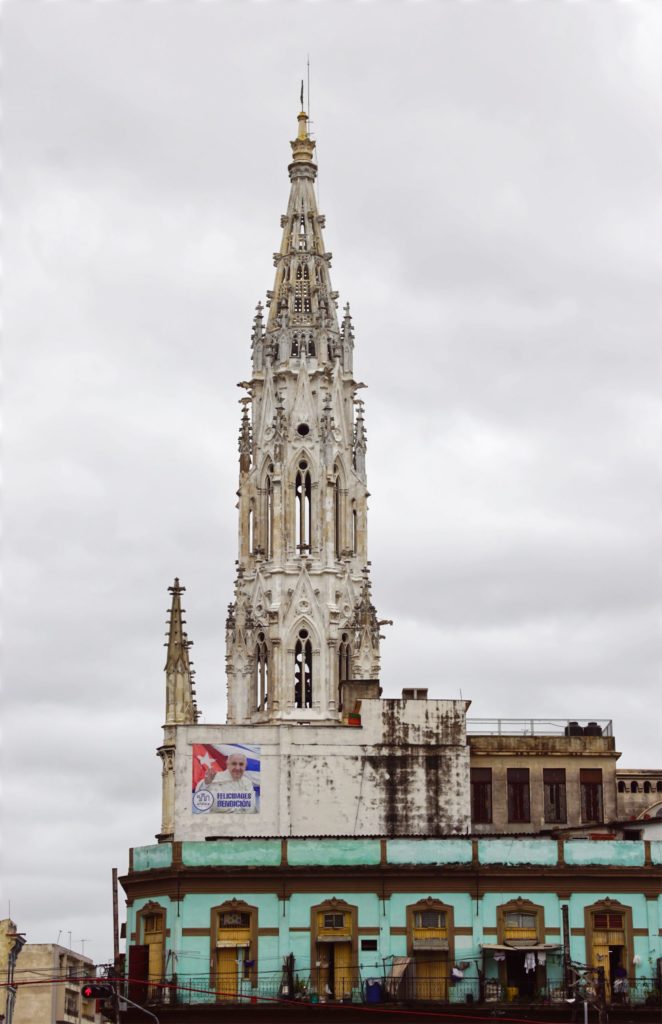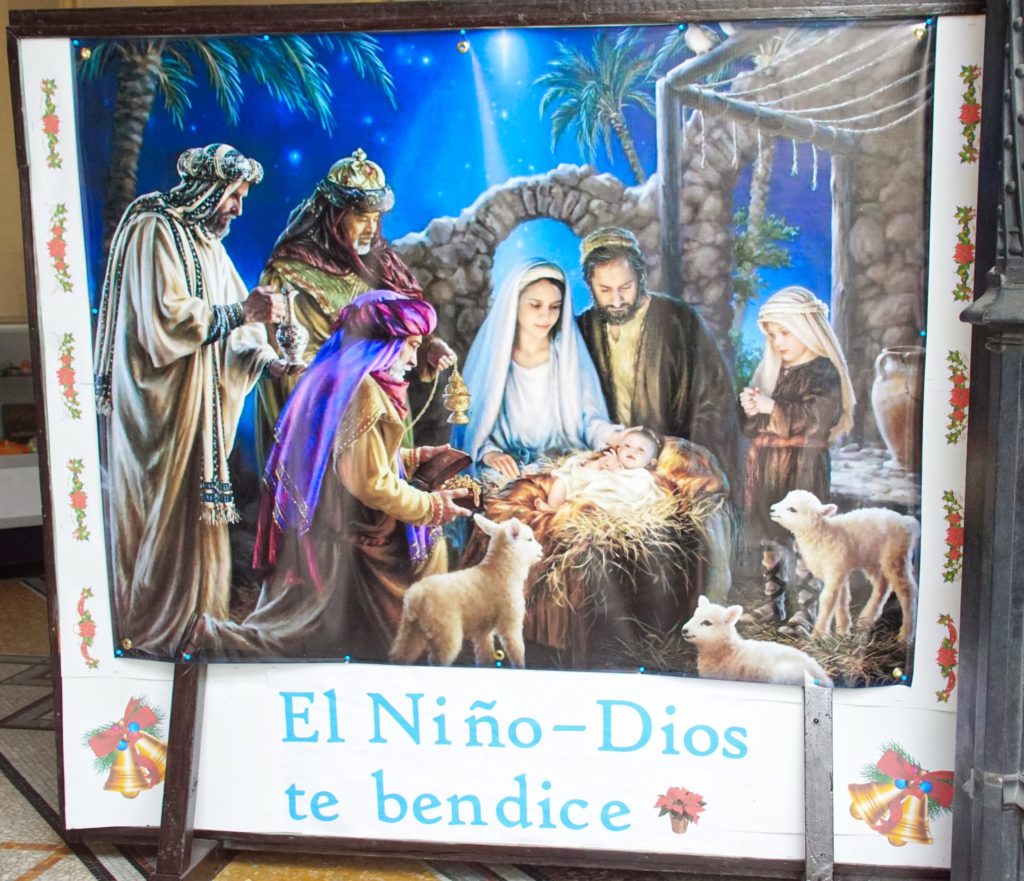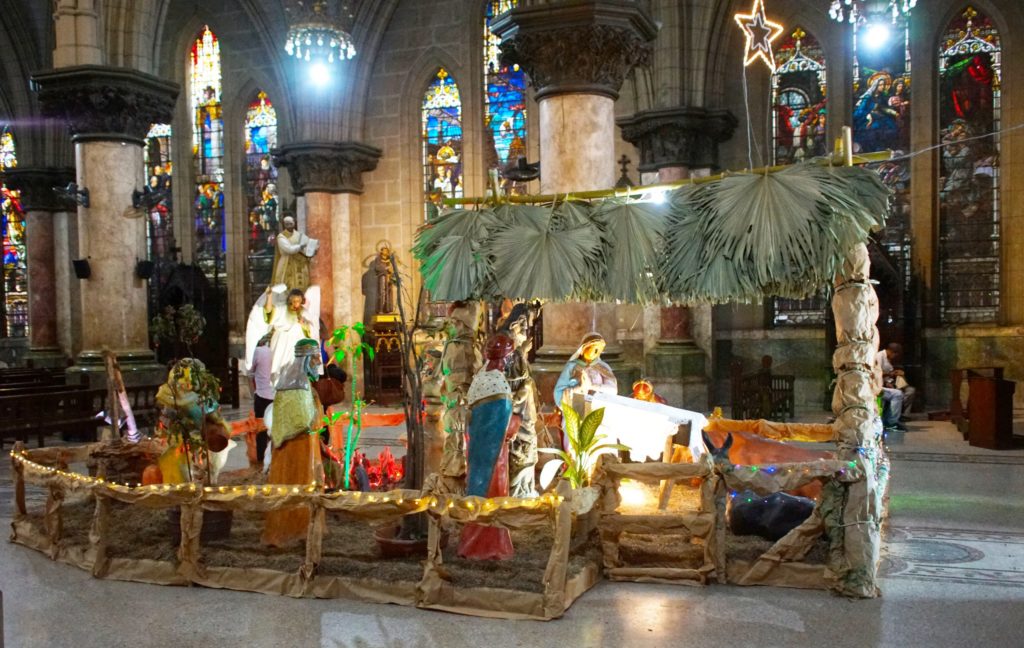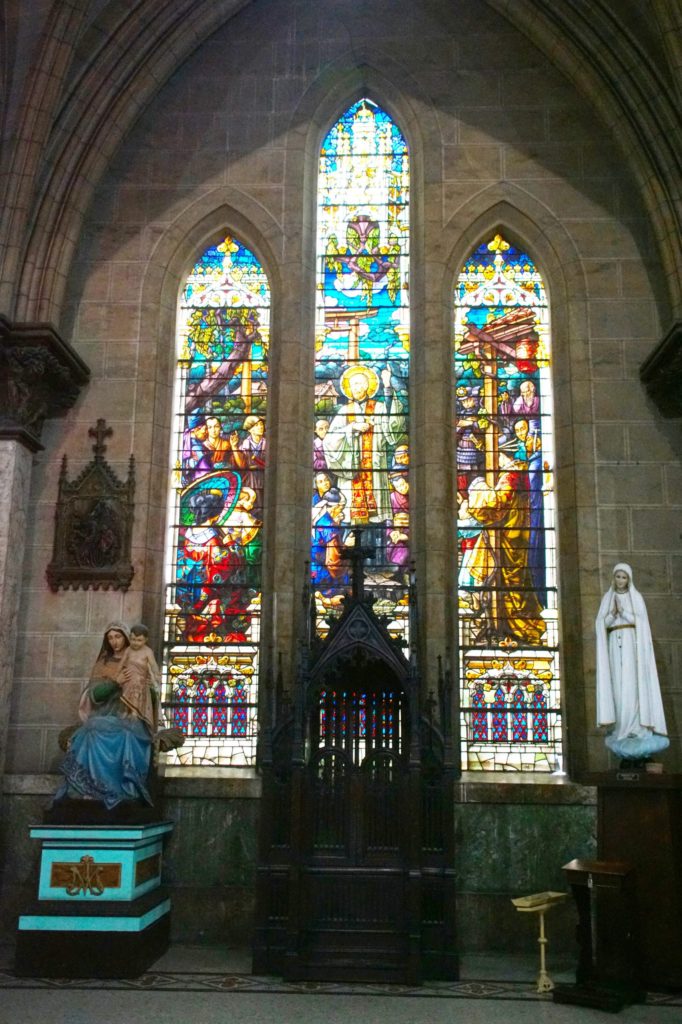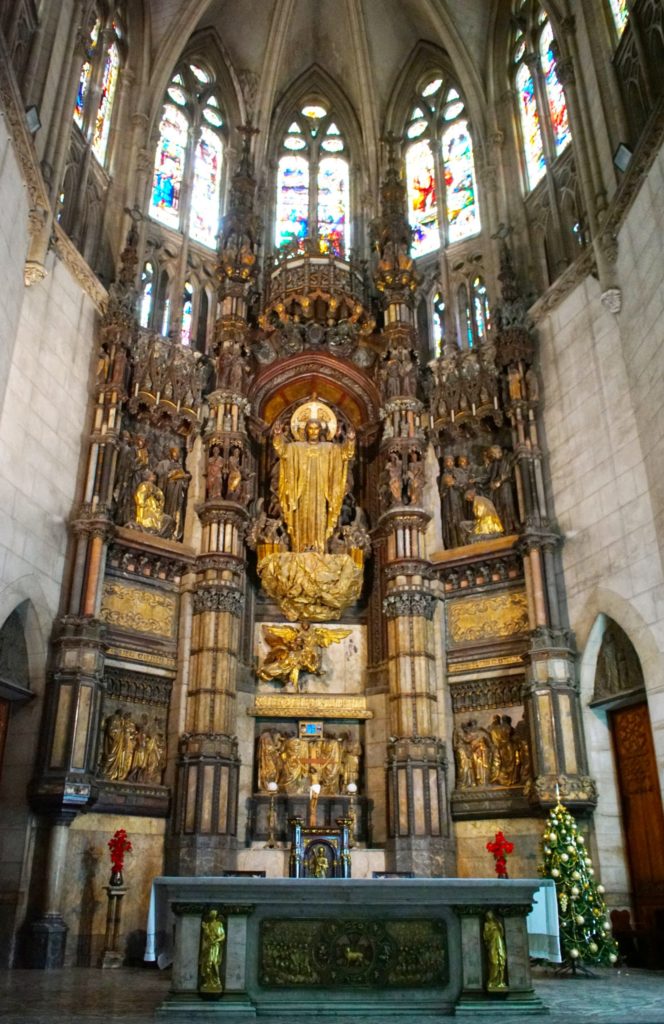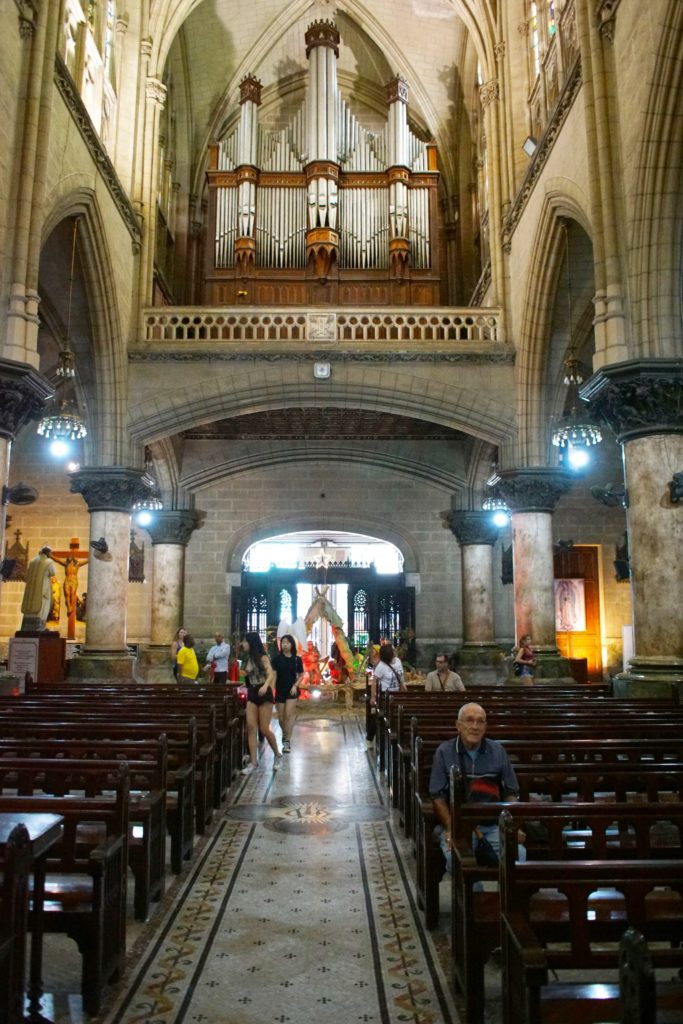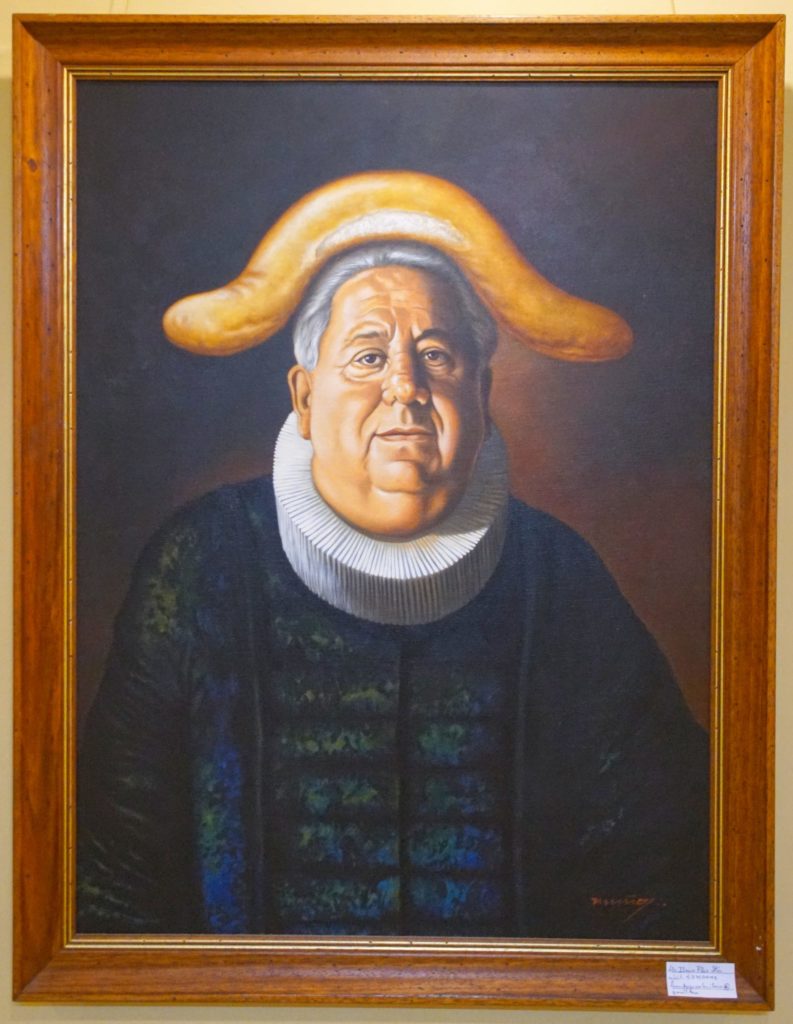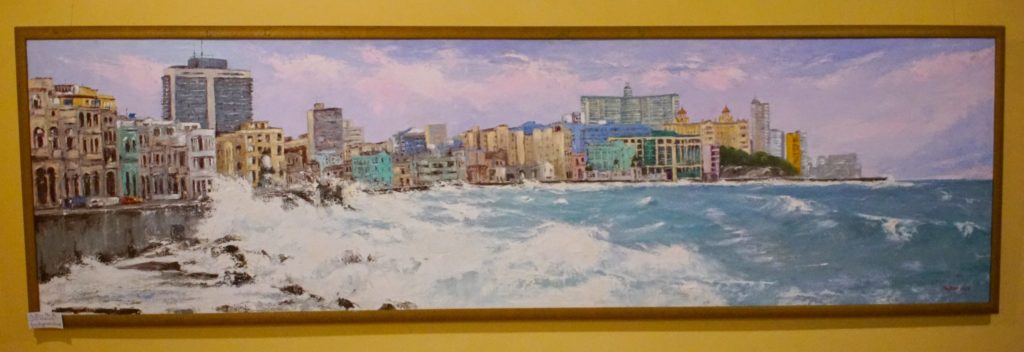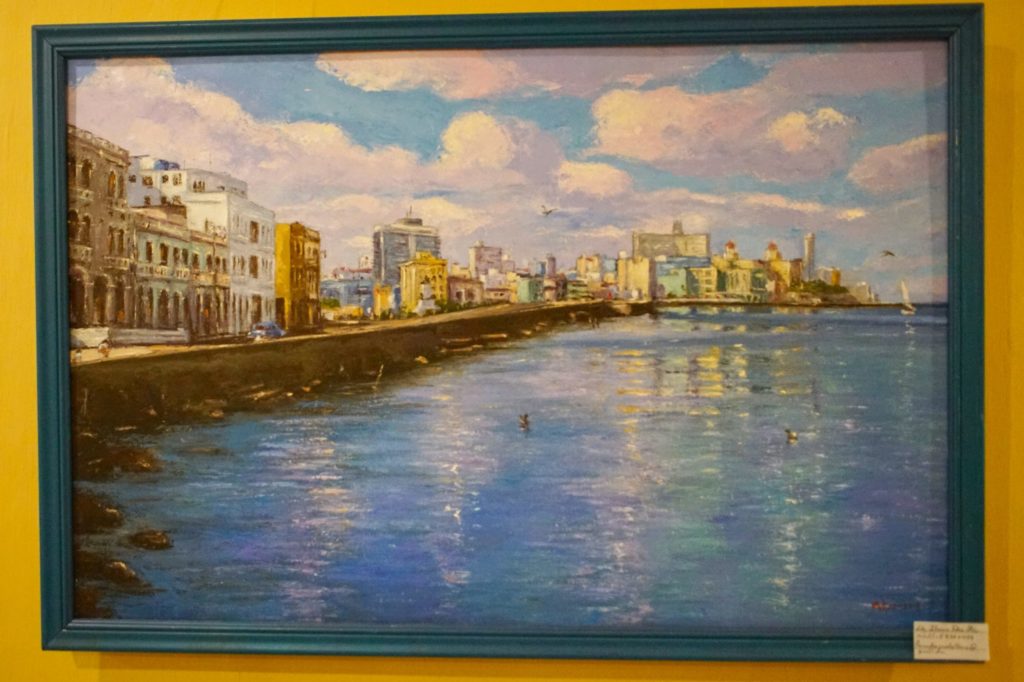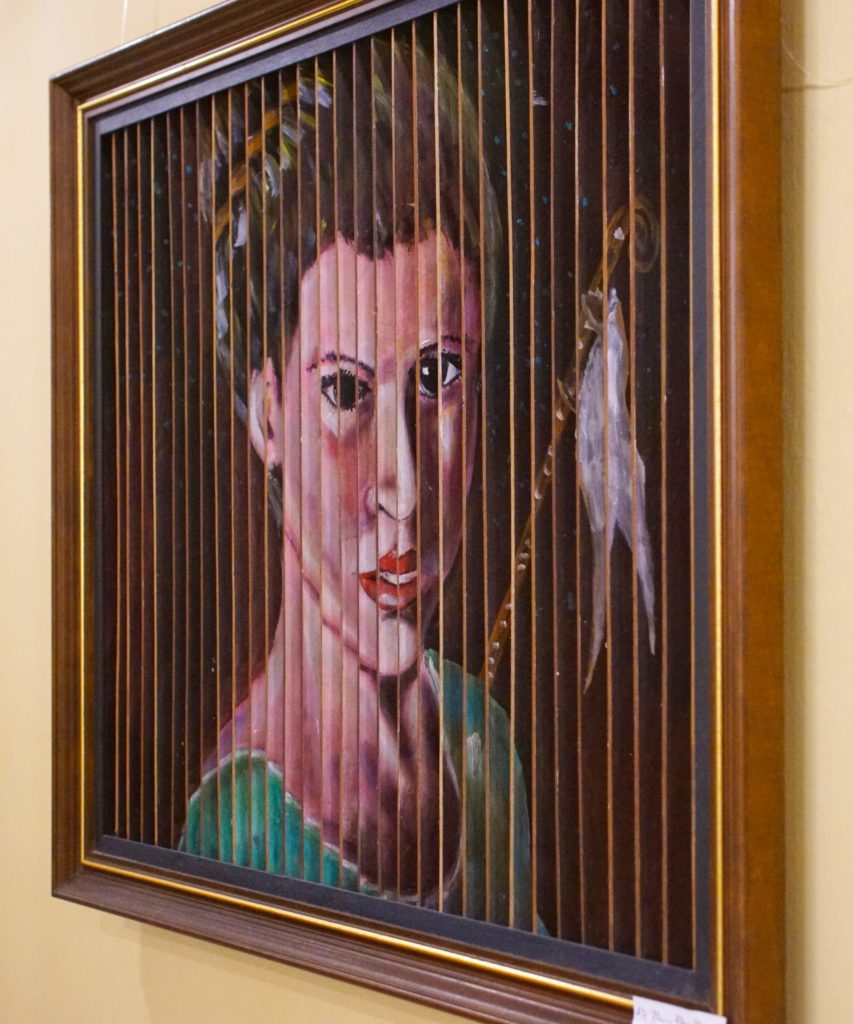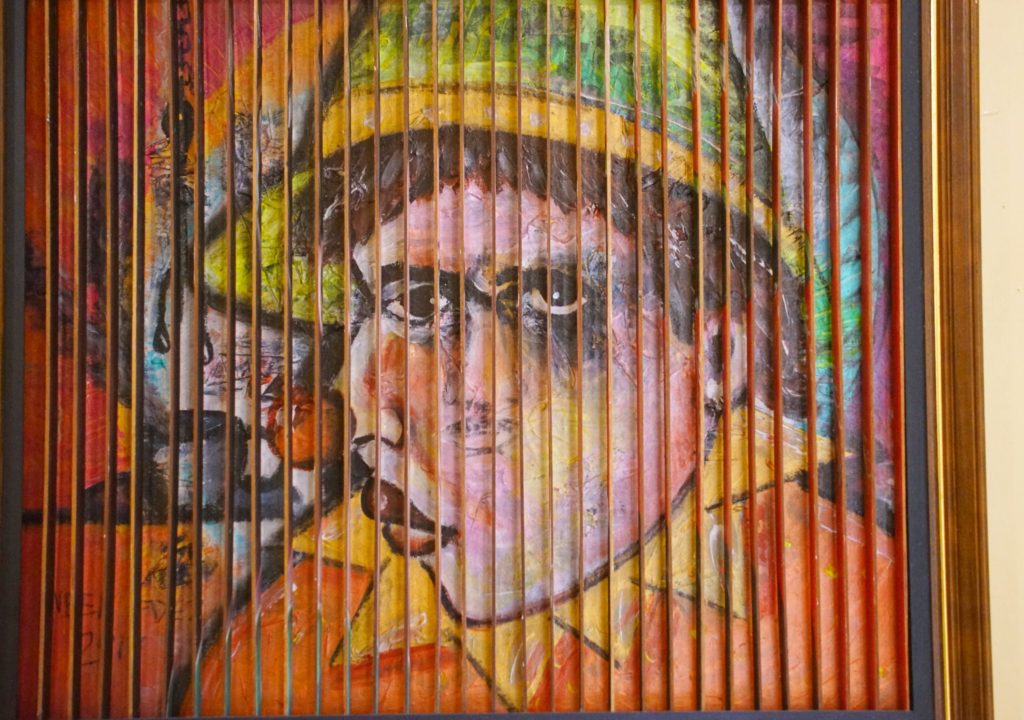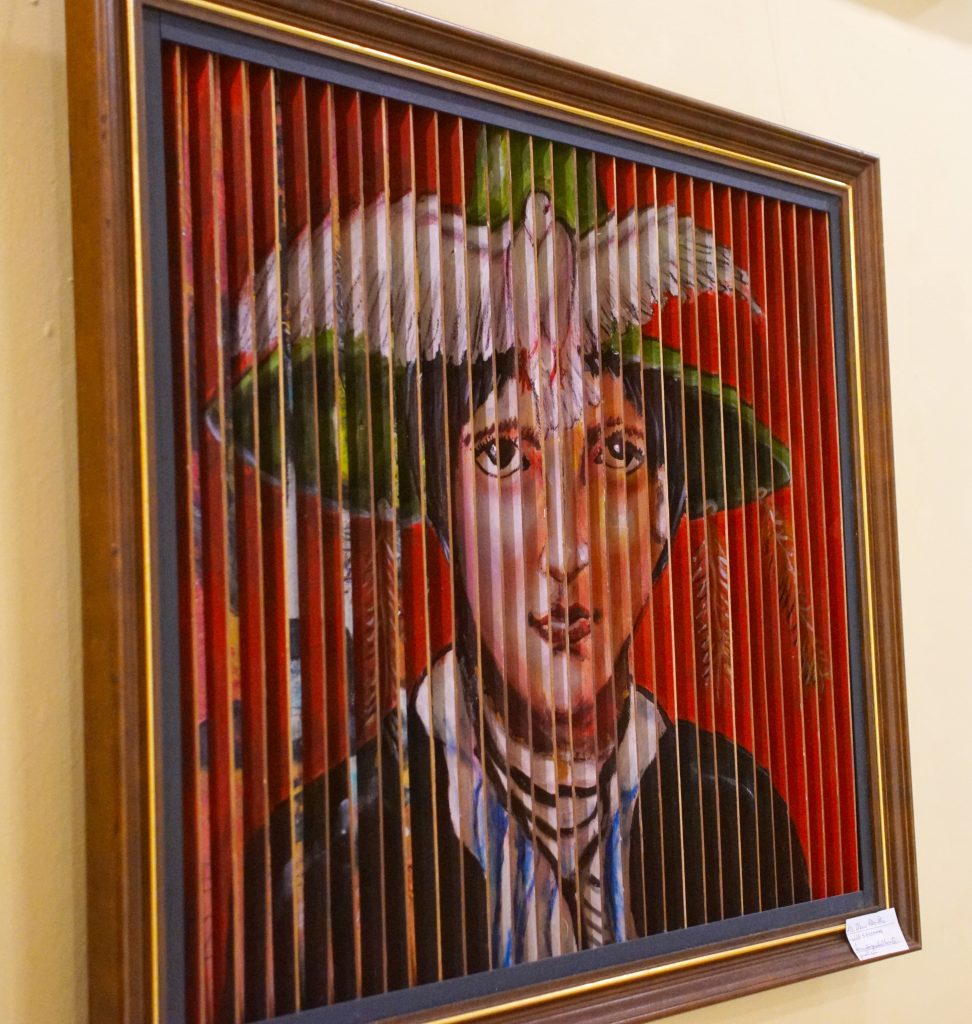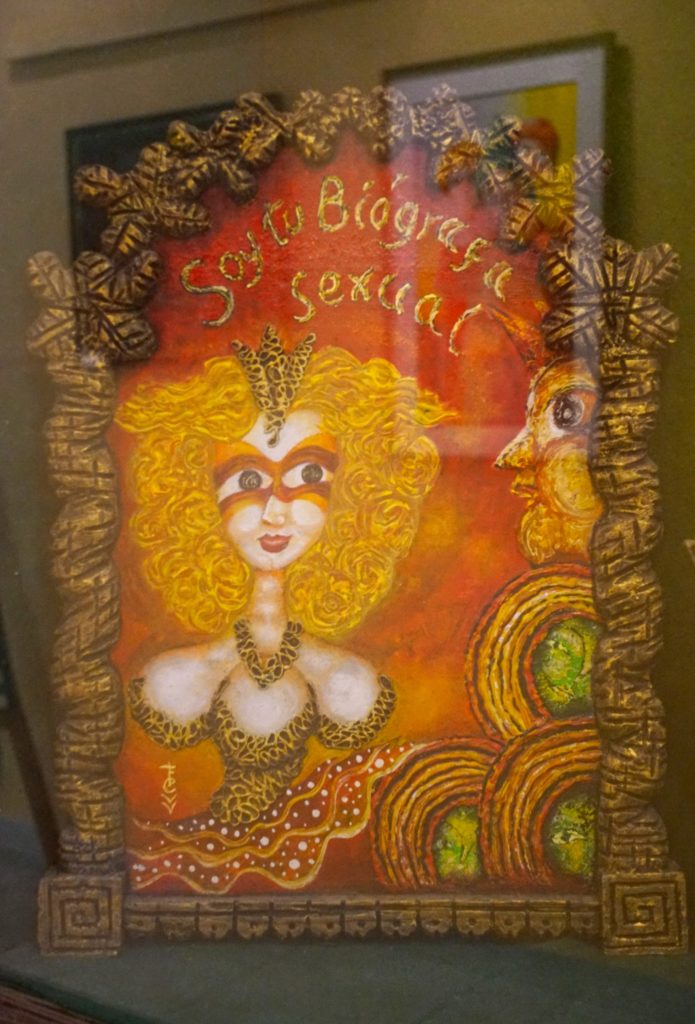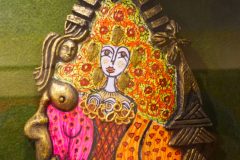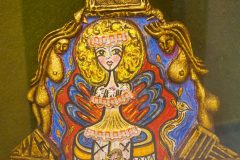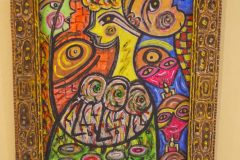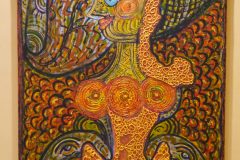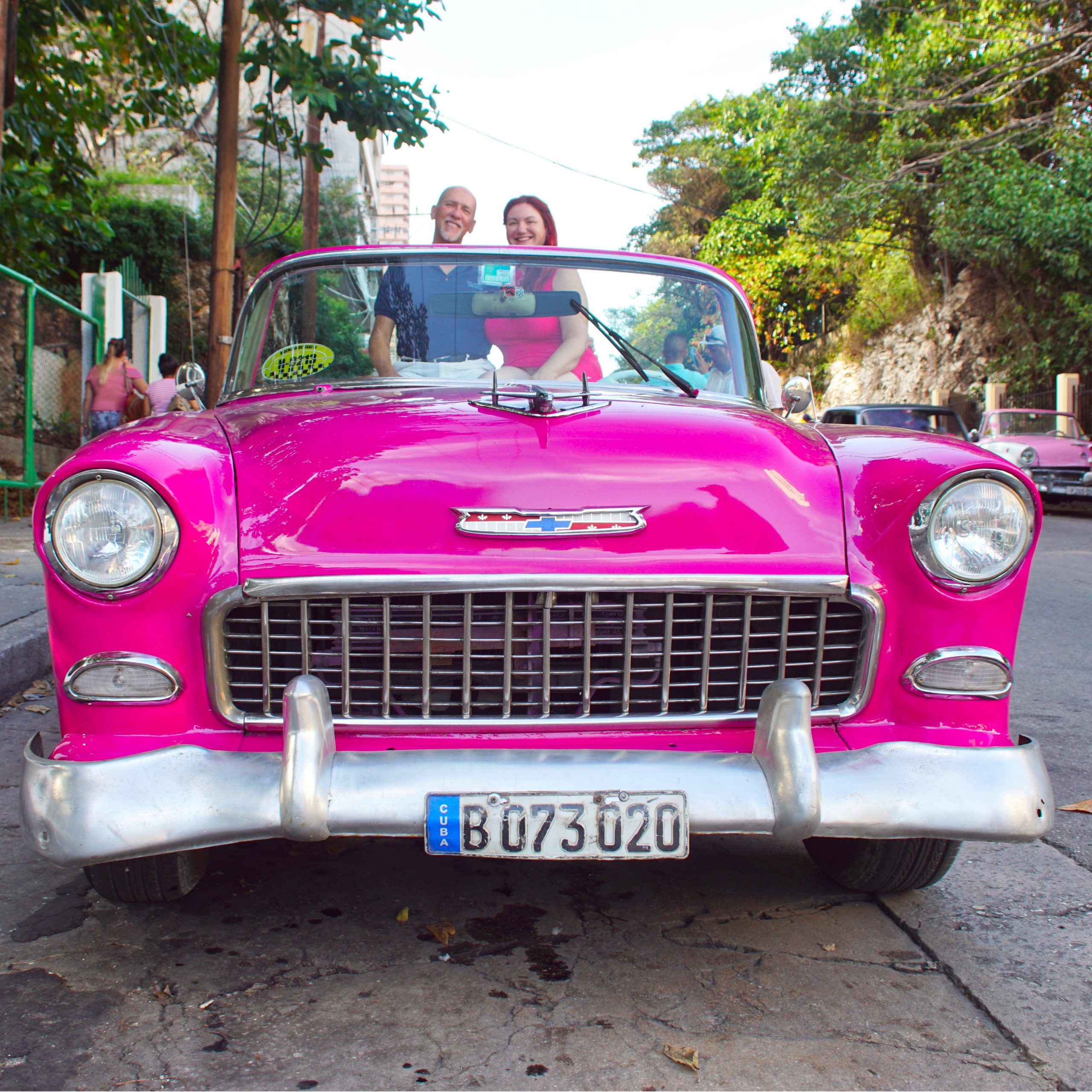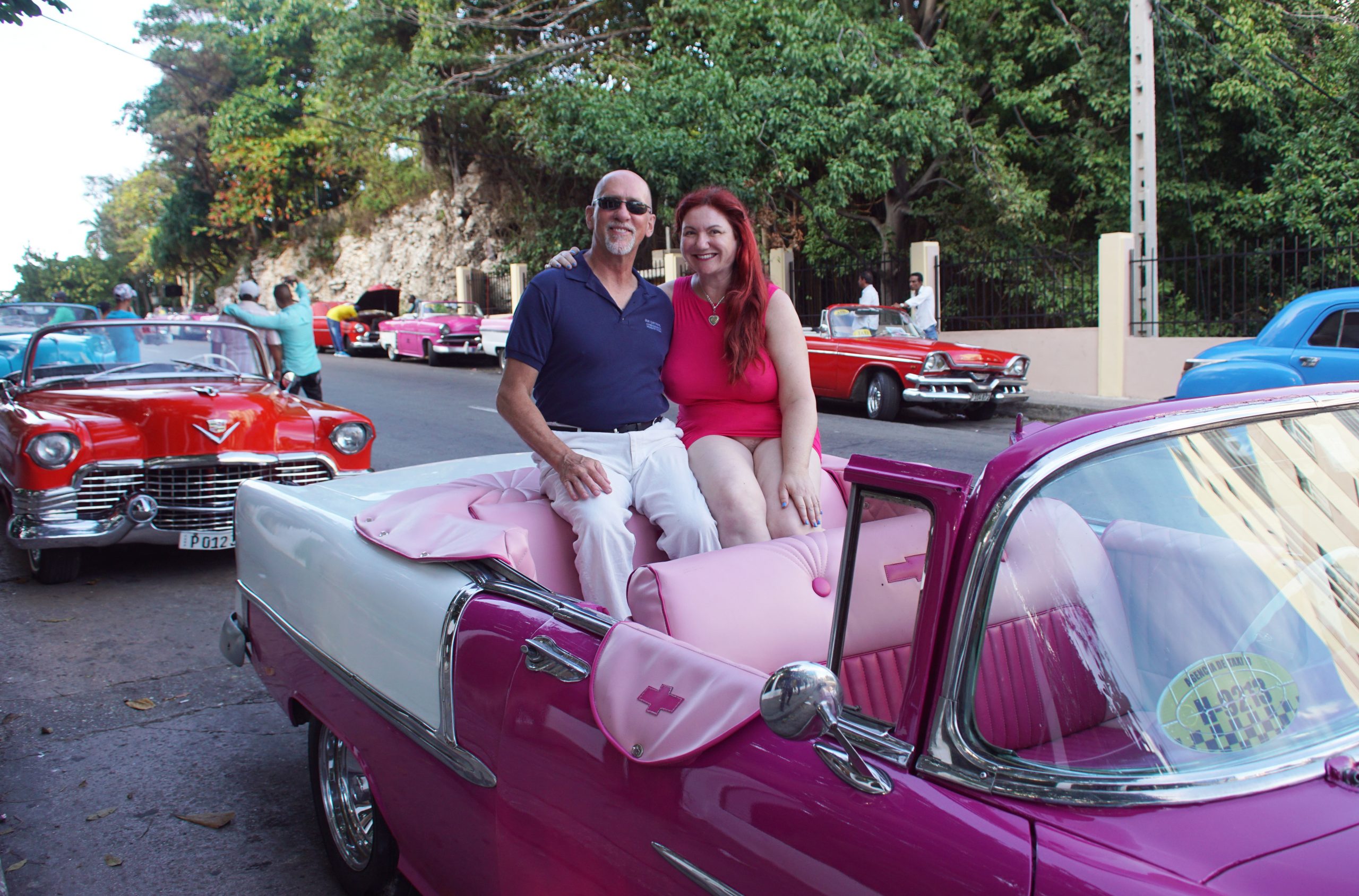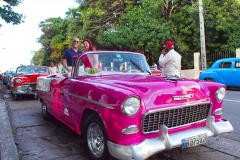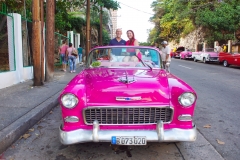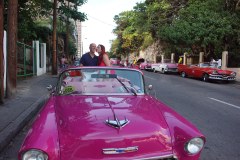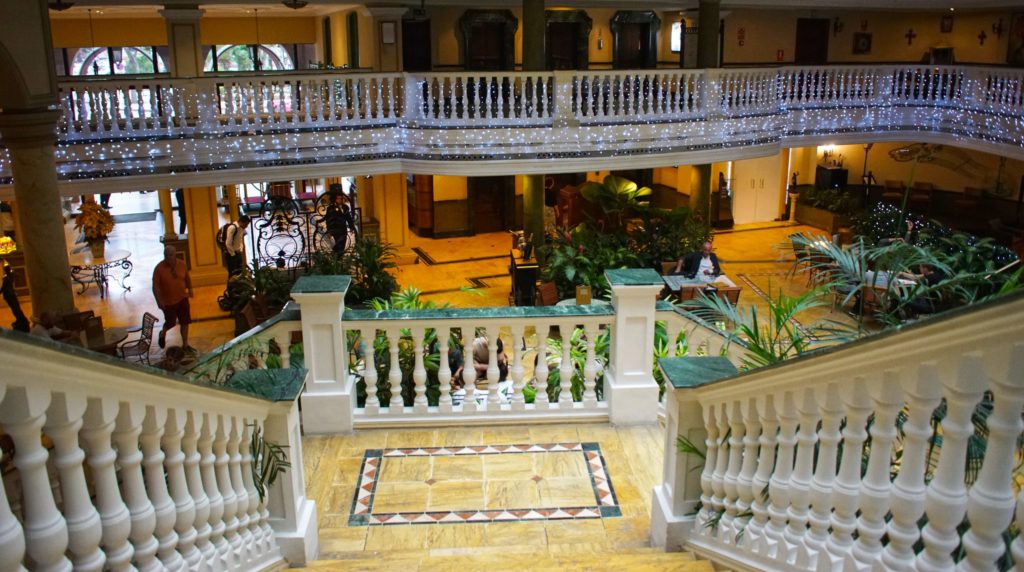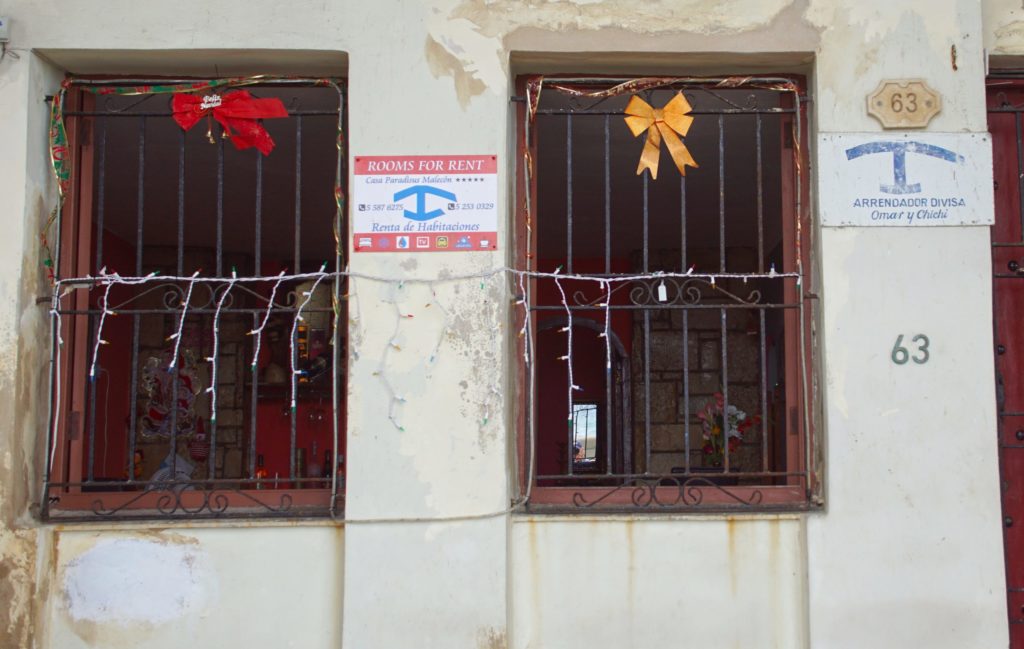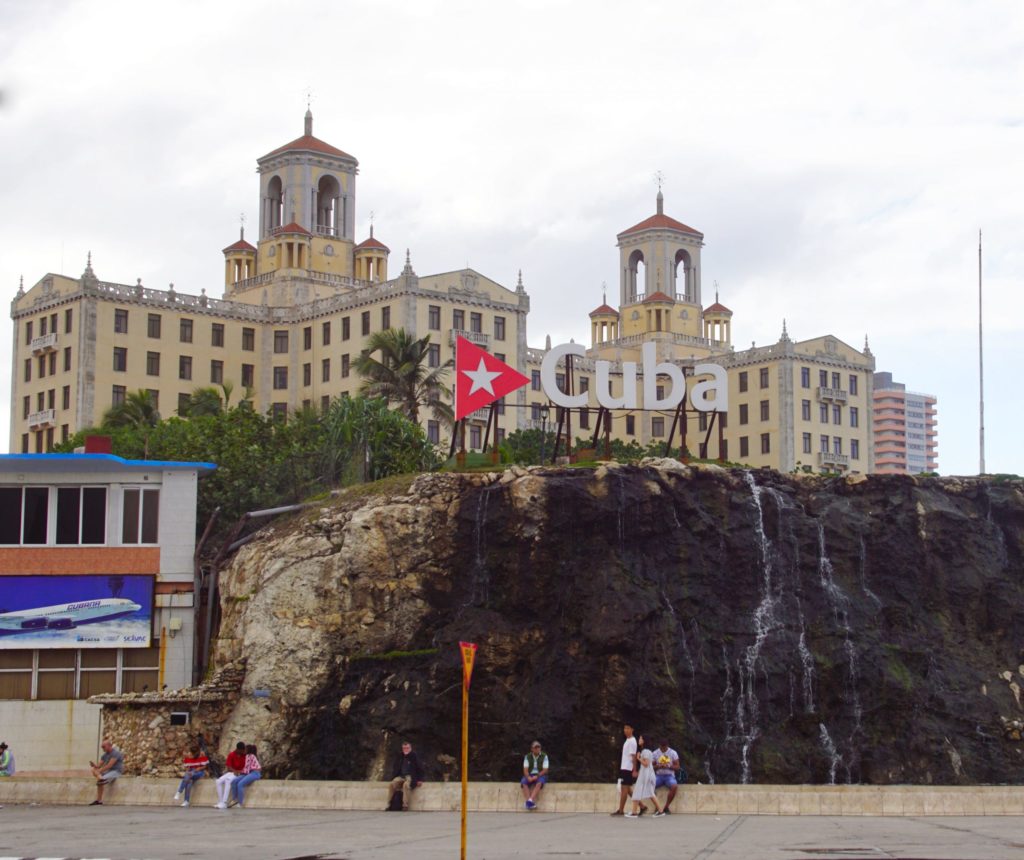Welcome to Christmas in Cuba, the second article in our Cuban adventure!
Before we begin visiting interesting places and having fun experiences, let us address the burning issue that defines Cuban existence: What the hell is with these granny panties?
For many girls in America, this would be a complete faux pas. The idea behind (giggity) tights is to display the curves of your derrière. She might as well wear jeans with a phone in her back pocket if she wants to walk away unnoticed.
She was slowly shrinking the amount of fabric down to 1980s, when she realized she needed a bolt of lace attached to the sides of her panties to ensure their granniness.
Okay, to be charitable, perhaps la Habana has a vast underground granny panty fetish scene, and they are laughing at us for not displaying our outsized panties with gusto. We may never know. 🙄
Fábrica de Arte Cubano
We had read about the Fábrica de Arte Cubano, and are in that neighborhood, so we decide to stop by for a visit and see what all the hubbub is about.
It is a factory or a church? It is shrouded in utility lines and abutting a chimney named “el cocinedo”, so it could be either, right?
A trio of sharks swim on the wall, oblivious to gravity or the lack of water, their mouths looking vaguely like the grill of a car. Okay, we are intrigued. Let’s go in!
Apparently, we are here about eight hours too early. Well, dang! So much for this adventure.
How did this sign happen? “Hey, FAC guy. Why is the entrance fee 2.00 cuc when it was only 1.50 cuc yesterday? And why is bread so expensive today?” FAC guy: “Read the sign, man. We aren’t responsible for the price of bread.”
El Cementerio de Cristóbal Colón
According to the internet: “The Colon Cemetery is one of the most important cemeteries in the world and is generally held to be one of the most important in Latin America in historical and architectural terms, second only to La Recoleta in Buenos Aires.” So, it is Christmas Day, and a cemetery seems the perfect place to enjoy the holiday mirth. 😀
The internet further informs us: “The area of the cemetery is defined by rank and social status of the dead with distinct areas: priests, soldiers, brotherhoods, the wealthy, the poor, infants, victims of epidemics, pagans and the condemned. The best preserved and grandest tombs stand on or near the central avenues and their axes. With more than 800,000 graves and 1 million interments, space in the Colon Cemetery is currently at a premium and as such after three years remains are removed from their tombs, boxed and placed in a storage building.”
Yikes! People really are dying to get in!
The main gate of Colon Cemetery was designed by the Spanish architect Calixto de Loira, one of the many personalities buried at this cemetery. The gate is built in Neo-byzantine style and is 34 meters wide and 21 meters high. And over the gate is a sculpture made of Carrara marble (not seen here); on the base of this sculpture is written “Janua Sum Pacis”. This monument represents the three theologian virtues of faith, hope, and charity.
The streets are wide an almost empty, which is not too different than the streets in La Habana. The landscaping is precise and clean, and it is peaceful and quiet here.
Notice the statue on the right: whenever I see a statue of a winged creature in a cemetery, I wonder if it specifically represents Azrael, the angel of death who is said to hold the scroll concerning the fate of mortals, or if it is just one of the many, many good angels or bad angels of religious lore.
Winged creatures are in abundance in this cemetery.
So, we wonder the cemetery, walking up and down the streets. Occasionally, we see other people, some of whom find easy comfort sitting in the shade on the graves. Well, I guess the folks inside won’t mind.
But mostly, the streets are empty and serene.
We look towards a cross atop a building and note a number of vultures circling above. They are either black vultures or turkey vultures. According to the internet: “Like the Old World vultures, they are scavengers. However, unlike Old World vultures, which find carcasses by sight, New World vultures have a good sense of smell with which they locate carrion.” Good to know.
Anyway, let’s get back to the crosses. Since Colon Cemetery is Catholic cemetery, and Catholic’s venerate the icon of a cross, we expect to see many crosses here. And we do.
This monument shows a girl carrying a cross. She has what appears to be a crown of thorns on her head, a symbol normally associated with the main deity of the Catholic pantheon, Jesus. There is no way I can figure out what the message is here.
You may remember from our article on Mexico City that there is a large variation in interpretations of the size of the cross associated with the death of Jesus. The average height of a man in Judea in the time of Jesus was 5 feet and 5 inches. A post in the ground should be 1/3 underground and 2/3 above ground. We are provided with a Lumber and Hardwood Weight Calculator, and have selected the cypress tree as a likely source. The post appears to be perhaps 12 feet of visible wood, needing 6 feet below ground, and the cross bar looks to be would be about 5 feet in length, making the total length 23 feet. And we can guess that the thickness is 4 inches by 12 inches. This puts the weight of the cross at 245 pounds.
At first, I thought this was a guy holding a kid, but the adult seems to have a breast, so it’s portraying a woman with short hair. You might conjecture that the woman is Jesus’ mother, Mary, and the child is Jesus, but why would they be hanging around (sorry) a cross, a device used to torture folks to death in those times? And not even a real one, but more of a road sign-sized one. And the little girl is carrying a cross like it’s a toy. Quite a mystery, eh?
This cross is held by a woman looking downwards while apparently pointing upwards and a bit off center. Or maybe her hand is supposed to be describing the size of something small, or perhaps she’s using sign language, something that didn’t exist then. Maybe she was holding something that fell out of her hand, like a Cuban cigar.
This cross has to be pretty light, but there is no way Jesus will fit on it. Once the cross is firmly put in the ground, the bar will come only to his waist. He’ll have to squat, but then his arms will dangle off the end of the bar. For being great engineers, the Romans did a poor job with this project.
This cross seems to be cracked, and I can’t figure out what the woman is doing. She is kneeling, and slipping a little so she has to hang on to the crossbar. But why? I don’t know any Catholic mythology to support this imagery.
This fellow is carrying a cross that is too small to support him, so it probably doesn’t represent Jesus. We can’t see his face, and he appears to be wearing a fancy hat. The real question is why he is sitting or kneeling. I’m pretty sure nothing in the Catholic’s gospels says, “Lo, after some time, Jesus took a break on a convenient chair.”
At first, I thought that the statue’s arm broke, but then I realized that there was no marker on the crossbar for the left hand and, more importantly, that Jesus is looking downwards, most likely at his arm. There is probably an important lesson here that makes sense to Cuban Catholics, but it’s lost on me.
That little scroll at the top of the cross reads, “INRI”, which is an abbreviation for Iēsus Nazarēnus, Rēx Iūdaeōrum, which is Latin for “Jesus the Nazarene, King of the Jews”, a reminder to all the folks in this Catholic cemetery that their god is a Jew and, as such, is forbidden to worship any god other than Yahweh. Weird, eh?
Some of the statues depict Jesus in flowing robes, but many show him wearing a hip wrap leaving you wondering, “How in the name of god does that stay on him?” Note the nails in the hand, then look at an image of the bones in the hand. There is no way a nail in a hand could support a suspended body.
This Jesus is decidedly taller and thinner than the other Jesuses. And he is gripping the nails in his hands, which he’d have to do to avoid falling off. But there don’t appear to be nails in his feet; instead, he’s just balancing on the little ledge they thoughtfully provided for him.
You might have noticed that most Jesuses are looking to the right; occasionally, Jesus will look to see what’s on his left side. And this Jesus has an abundance of hip-wrap, enough so that it’s dangling beside him up on the cross. You’d think they would have just wrapped him with it once more.
If we assume there were no giant women in biblical times, then we are left wondering why the cross is so tiny. I mean, that’s a child’s cross, and Jesus was reputed to have been in his 30s when he was killed. That symbol on the cross is the Greek letters chi and rho superimposed, which is one of the earliest forms of christogram, representing the Greek word ΧΡΙΣΤΟΣ (Christos). My guess is that it was a lot less expensive just to represent their god with a couple of letters than to pay for the whole statue.
This cross seems to be just the right proportions. You wouldn’t need it any bigger, and if it were any smaller, Jesus’ hands would be dangling, which would be unsightly. In this depiction, Jesus isn’t looking down, but not really up, either. He seems to be just resting his head. The person in front of the statue has gravity-defying hair, which is pretty cool.
Okay, enough about crosses. 😐
On an isolated hill, we see crumpled metal mounted on sticks. When we walk around to the other side, we discover it shows stylized Cuban flags. ¡Patria o Muerte, Venceremos! indeed!
Lots of dead rich people are buried here. You can tell because they display their disposable income by building small houses to inter dead bodies while the bodies slowly decompose. To each his own, I guess.
This house seems to be imitating a small church. There seem to be two different architectural styles between the building and the roof, but we aren’t scholarly enough to know why.
This red roof has a character perched on the top, akin to Batman looking over Gotham City, except everyone in this Gotham is dead.
This appears to be a chapel in the round. We do not go in, but we wonder if the altar is in the center, and folks can watch the priest from any angle. That would be cool.
Poor people have to be buried somewhere, too, so they built an apartment complex. As long as you are thin enough to fit in one of the drawers, you are good to go. And, I suppose, if you don’t fit, well, wait a few weeks, amirite? From what we can gather, if you are really, really, poor, you get buried in the basement.
These folks are in nice, comfortable single-story coffins. We wonder: are the apartment coffins trendier, or do folks prefer the spread-out, country style look?
This fellow is wearing what appears to be a fireman’s hat, and the logo on the pedestal is two axes, a fire hose, and a burning torch. So we are pretty sure it’s a tribute to Cuba’s firefighters.
In fact, Colon Cemetery has many statues and monuments to guilds and other organizations, as you can see in our slideshow.
I have a “why are we wasting land?” attitude towards cemeteries, but I can understand that other folks might find them relaxing for their white marble and manicured lawns. Perhaps the people who live in these apartments pay extra just for the view.
It appears that poor Alfredo Hornedo, whose name pleasantly rhymes, was holding something, perhaps contemplating the nature of it and of life and existence. You have to admit, Alfredo was in pretty good shape when they made the statue of him.
We have a few more statues for you to enjoy.
There is much potential for artistic creativity in a cemetery, and Colon is no exception. But it does seem like the body of Jesus is being carried a bit too casually by the other person. Ah, well, it’s art.
Please enjoy these other fine works of modern expression.
I find depictions of dead people’s faces a bit creepy, but I can understand that other people have different ideas. However, there is always the danger that part of your nose will break off, and you’ll be remembered as the guy with Hansen’s disease.
I see photographs on graves and think, “Why did they pick that photograph?” Did mom like it because he was wearing his cute bowtie? Or does his expression convey his attitude towards life, something like, “Hey, watch this! I saw it once in a cartoon but I think I can do it”? We may never know.
From the photograph, you’d think she was a singer from the 70s who died on stage. If you look closely, she was born in 1940 and died when she was 75 years old. So, when was this photograph taken?
Here we are at the intersection of Street 1 and Street B, illustrating the casual beauty of the Colon cemetery on this Christmas day.
This winged creature is interesting. It appears to be female. Her gown morphs into her body at the waist. She is either wearing an unflattering hat or had a disaster at the hairdresser. Her arms are covering her chest, perhaps shyly or perhaps because she is cold. And she appears to be disapproving of those in the graves and those passing by.
We pause near the grave of <missing letter>A<missing letter>imino Martinez and Family for a photograph of ourselves. If you forget that it’s all decomposing corpses, it’s really quite beautiful here.
At one time, there was more to this stained-glass image of (probably) Jesus, but from what is remaining, it appears that Jesus is surfing the clouds in heaven and having a grand time.
Okay, enough of the cemetery. Let’s go to church.
Sagrado Corazón de Jesús y San Ignacio de Loyola Church
According to the internet, the “Church of the Queen“,Cuba’s tallest and perhaps most beautiful church rises in the midst of the urban landscape as one of the most accomplished religious constructions in Cuba in terms of architecture. Its notable 77-meter tall tower, topped by a 4-meter tall bronze cross, with 32 gargoyles and a variety of statuettes. The inside is lit by 69 spectacular stained-glass windows. It can be seen from several spots in Havana.”
Indeed, it can be seen from quite a distance, which is good because it is snuggled in the arms of many unattractive buildings. Fortunately, its Gothic architecture stands out from the typical Havana buildings.
We enter the front door and see a picture of Jesus, three men with presents, sheep, Jesus’ mom and dad, and perhaps his brother. Or sister. It’s hard to tell.
Just inside the church is a diorama (which the Cubans seem to love) depicting the same scene as in the picture, except this one has a winged creature hovering in the background and the area where Jesus is laying is VERY bright. Perhaps the winged creature is the Light-Bringer?
The church has many beautiful stained-glass windows that represent the life of Jesus Christ and the Virgin Mary, as well as passages from Loyola’s and other Jesuit saints’ life. Under this particular window is a cage, for some reason.
The main altar has many carvings and images of gold, or perhaps gilded, or maybe just painted. According to the internet, there is a bronze plaque where Jesus is portrayed as a slaughtered lamb, for some reason; however, we can’t find it.
The church has “uno de los órganos, más elegantes de Cuba.” It seems like we’d need some pretty hefty earplugs were it to be playing. However, the acoustics are probably heavenly.
The folks at the Church of the Queen can write message to their god, just in case prayer doesn’t work. Isn’t that thoughtful?
Okay, let’s move on. 🙄
Hotel Nacional de Cuba
The Hotel Nacional de Cuba is a historic Spanish eclectic style hotel in Havana, opened in 1930. Located on the sea front of the Vedado district, it stands on Taganana Hill, offering commanding views of the sea, and the city. Following the Cuban Revolution in January 1959, Havana’s casinos were briefly shut down, but were quickly reopened after protests by casino workers left out of work. Fidel Castro nationalized the hotel on March 20, 1960 and finally closed the casino in October 1960, almost two years after his overthrow of Batista. After years of neglect due to the reduction in tourism following the revolution, the hotel was mainly used to accommodate visiting diplomats and foreign government officials. The collapse of the USSR in 1991 forced the Cuban communist party, anxious for foreign exchange reserves, to reopen Cuba to tourists.
We are not allowed to stay at this hotel because it is owned by the government and our money would be supporting the evil socialist regime rather than supporting the Cuban people. However, we have no idea how the US government could enforce this, and since we know Americans are staying here, it appears the US government does not.
But, I digress.
We are here only to look at the art display on the walls of the hotel.
I’m sure you have the same questions we have. “How did they get this gentleman to pose with bread on his head?” “Perhaps it’s not bread, but merely a bread-shaped hat?” “Why do his eyes follow me, accusing, as if to ask, ‘Have you seen my bread? I just had it…'”
This picture intrigues us. The waves seem furious, as if they will engulf the city. We are told, in fact, during storms, the water does flood the streets near the ocean, due to the absence of a breakwater.
The painting is either fanciful or representing a pre-revolution idyll, because there are no sailboats in Cuba these days.
A woman in green looks out, perhaps angry, as a white cloth dangles from a stick.
A boy, perhaps a relative of Pablo Ruiz Picasso, ponders the circumstances that brought him to this place at this time.
A man, wearing a green hat, endures a white bird fluttering irritatingly close to, or on, his head.
And the cleverness of this three paintings is that they are all in the same frame, each image seen depending on where the view is standing. Cool, eh?
In this painting of post-apocalyptic Earth, plant-people converse with plant-birds and plant insects. There is a lot I don’t understand about art, that’s for sure.
I don’t understand this, either, but I can appreciate it. Someone asked the question, “What would it be like if women had three breasts instead of two?”, and an artist courageously accepted the challenge.
There are many more interesting works of are at the National Hotel of Cuba, and we encourage you to visit and see for yourself. 😀
Classic Cars
We are in Cuba, so we must avail ourselves of their Classic Car tours.
If you’ll remember from our last article (Hanukkah in Habana), we have a Superhost, Señora Maria Antonia, who told us to go the National Hotel of Cuba by the waterfront to find a car, and to pay no more than 30 cuc. So we take a taxi (10 cuc) to the hotel and slowly walk past the dozens of cars, inspecting them for cleanliness and upkeep. We walk past all of them, quietly evaluating the car and the driver (both for how he is dressed and how pushy he is).
We want one where we could sit on the back seat and pose, so we select this one.
We ask the driver, “How much for one hour?” and he replies, “50 cuc.” We said, “No, 30 cuc.” “Impossible,” is his reply. We turn away. “40 cuc!” he shouts, but we continue to walk. There are number of people talking animatedly to the driver and, after we walk 5 or 6 steps, we hear, almost lost in the tumult, “Okay, 30.”
Immediately, another person asks us, “Where are you from?” and we ignore him.
It’s something we read about and quickly experienced in Cuba: if people on the street act friendly to you, they want to sell you something. First they ask where you are from, then discover they have a family member or friend from that same area, then offer discounted Cuban cigars, half-price dance lessons, special deals at a restaurant, whatever. (You can read about this on Tripadvisor.) While walking, they might follow you for half a block before the break-off and return to their territory, or they may not stop talking until you cross the street purposefully to avoid them. But it’s best to feign ignorance of any language they speak and just smile and shake your head, as if uncomprehending.
So after Mister I-want-to-sell-you-something asks us twice about our home, he finally says, “I’m your guide. I need to know what language you prefer.”
Derp.
We apologize and explain the reason for our rudeness (which he relates in very fast Spanish to the people around them, and they have a good laugh). Our guide, Yordanis (the root is like “Jordan”) offers to take photos of us sitting on the back seat.
We hand him our 35mm camera, and he wraps the strap around his wrist to prevent accidents. Okay, major points for that. Then he takes photographs of us showing both us and the beautiful car.
Yordanis obviously knows what he is doing.
And we’re off! They offer to take us to a number of places we’ve already seen, such as the Malecón and the Colon Cemetery (above), so we ask the driver to just drive down the coast, away from the city, and he obliges. But first, he wants to show us the tropical forest that abuts the Rio Almendares. In fact, it’s the Bosque de La Habana, a parc Metropoitano and part of Havana’s Gran Parque Metropolitano. We arrive at the park and have a few photographs of ourselves taken by Yordanis.
We are not certain the Bosque de La Habana is indeed tropical, but the vegetation is lush and green.
Mostly we just drive through neighborhoods and past building as Yordanis explains some of the history. “The Hotel Riviera, built in 1951, was the first hotel in the world with central air conditioning.” “Cuba was the second nation in the world to broadcast television in color.” (It was strange not to be able to instantly validate the claims on the Internet, but everything he told us checked out.”
Eventually we arrive at Fusterlandia, an “impoverished neighborhood as a dreamy folk art kingdom.” There are many interesting Fusterlandia photographs to show, and we will cover that in a future article. 🙂
The hour ends too quickly, so we ask if they can extend an extra hour, and they can.
At the end, they drive us directly to our Airbnb, where we thank them and wave goodbye. It was an excellent adventure.
And if you need to arrange a guide, we highly recommend Yordanis, who provided us with his contact information.
Christmas in Cuba
Okay, this article is “Christmas in Cuba”, but we have shown very little that would identify this cheery season. Well, Cubans do not celebrate Christmas in any way that we can easily see. There are extensive “parties” that only tourist can afford, and hotels will decorate, but the vast majority of people in Havana seem oblivious to the holiday season.
Here is an example of Christmas decorations in a hotel. Nothing ostentatious, but definitely an effort was made to seem merry.
And this is the only Christmas decorations we find in the non-tourist areas.
So, there you have it: Christmas in Cuba!
Are we disappointed with the lack of ostentation or merriment? Not at all. We are here to see the Cuban people and culture, and we are honored to be so intimately involved.
Our next article will explore more Cuban culture, and we are sure you will enjoy it. Until next time…Merry Christmas from Cuba!

